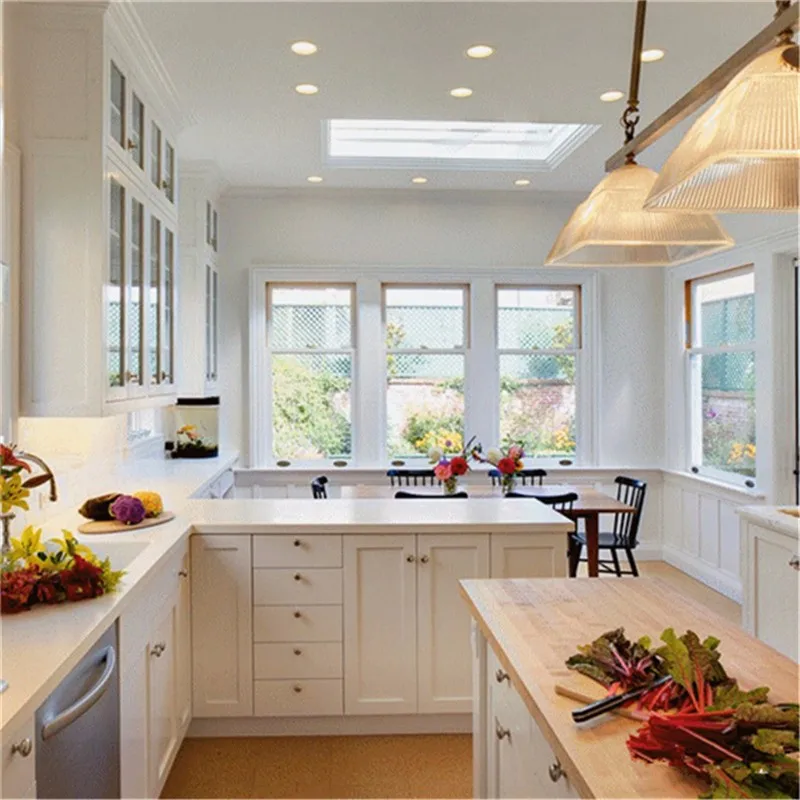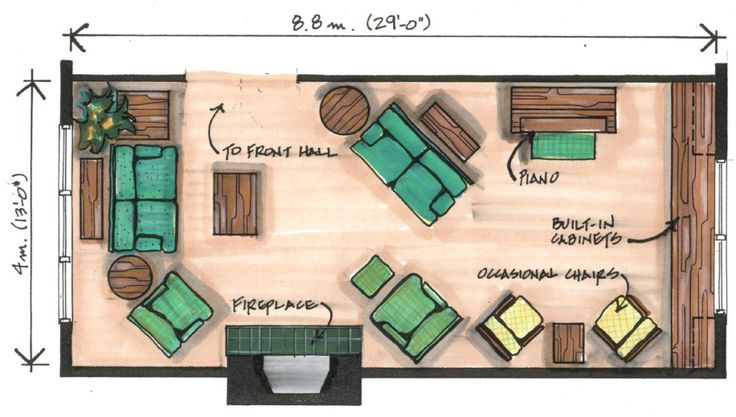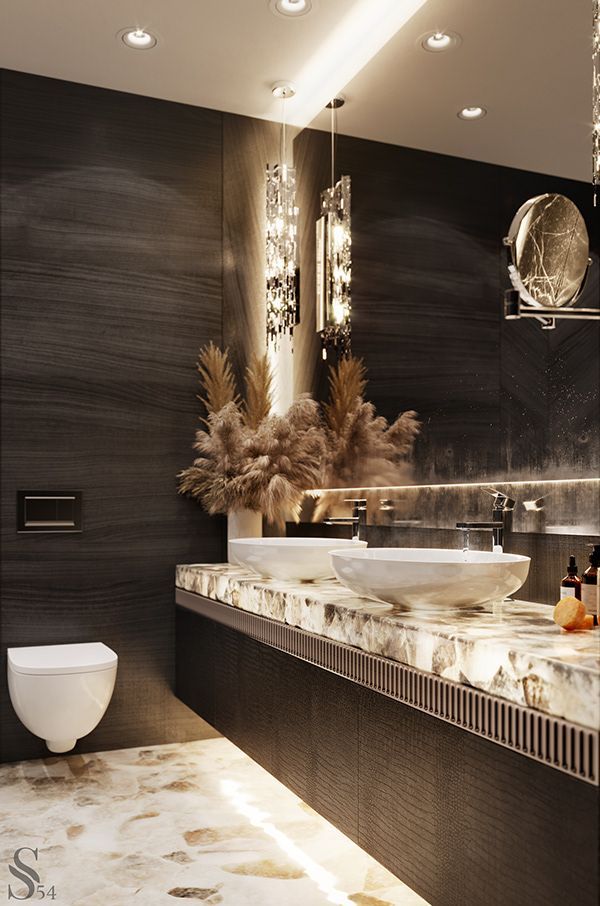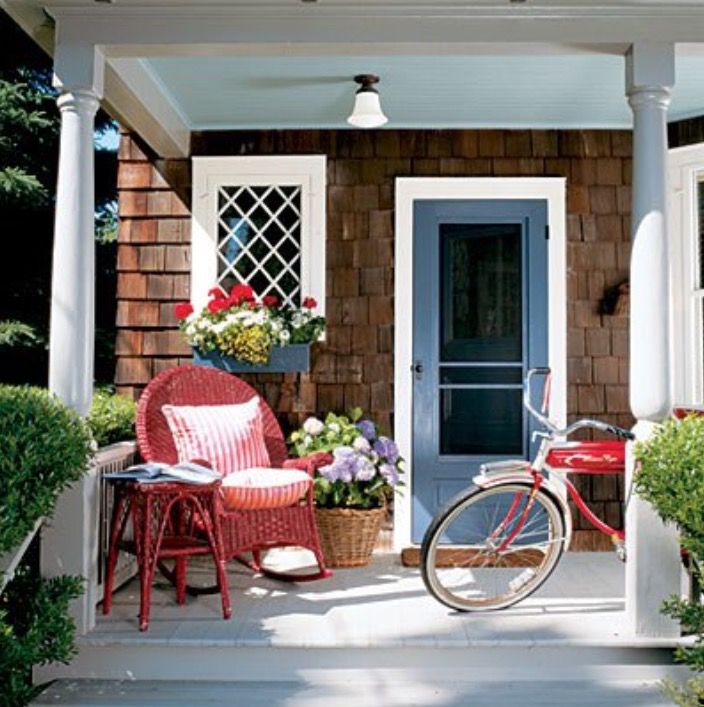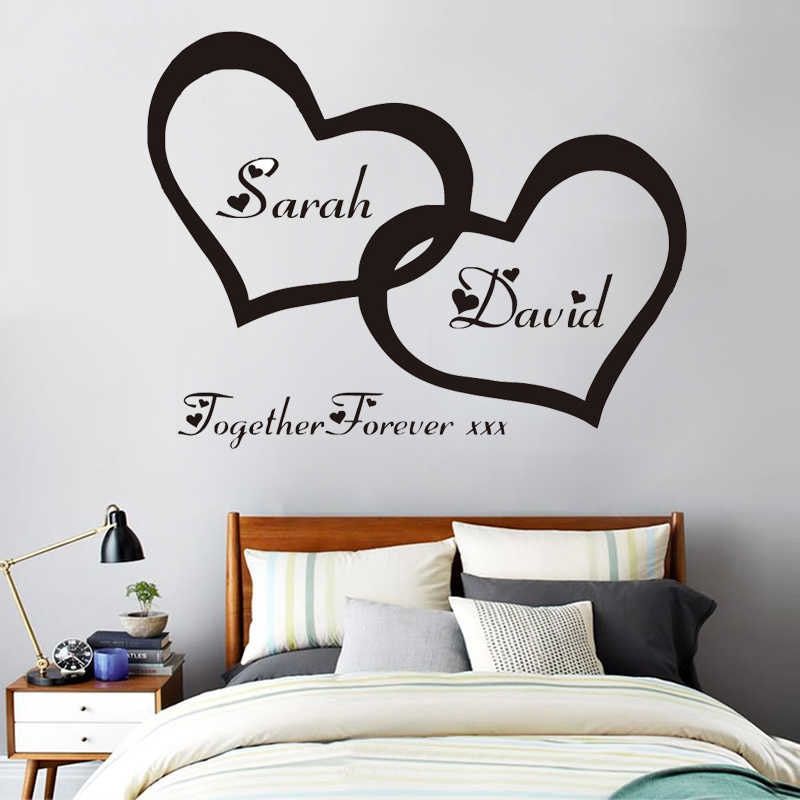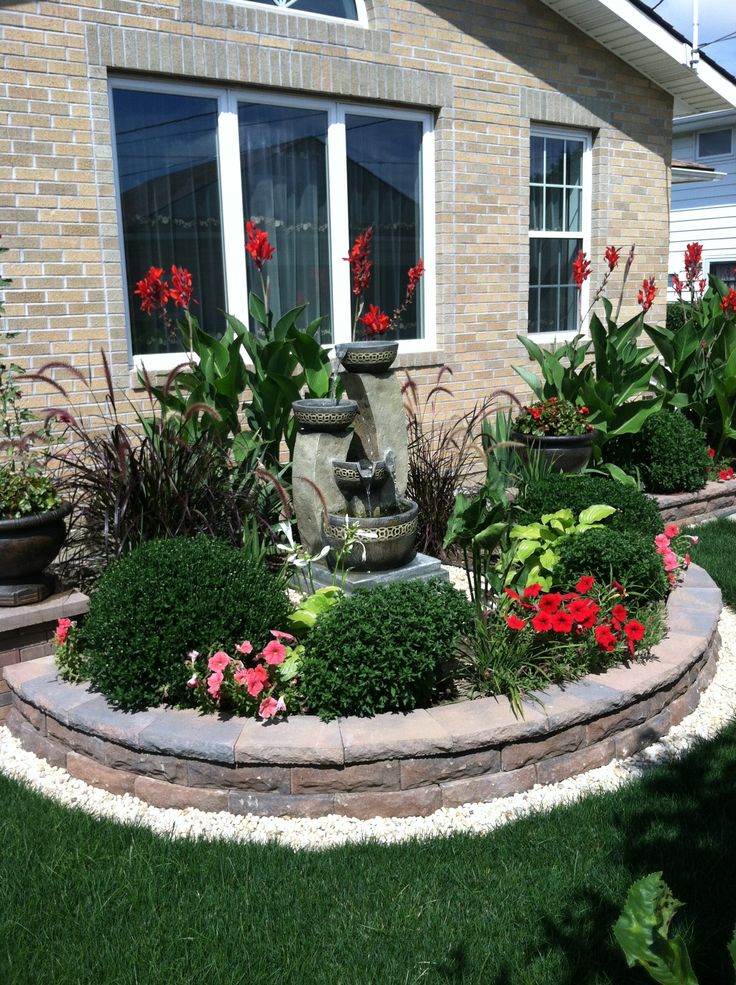Kitchen design for narrow spaces
10 ways to maximize space and interest |
Middle kitchen: Industville/Classic Interiors
(Image credit: Future)
Not all homes come with vast open spaces. Our narrow kitchen ideas are perfect for those not blessed with a large and sociable space.
If you have a long, narrow kitchen, then you’ll be more than aware of the tricky task of making it a long kitchen look wider than it actually is, while desperately searching for interior designer tricks to make your space look beautiful as well as functional.
So much has changed in the way in which we design and use our kitchens over the last decade or so, but there is something reassuring in how narrow kitchen ideas and layouts have adapted – and thrived – in the modern home.
Narrow kitchen ideas – maximize space in a long kitchen layout
If your kitchen is on the narrow side, there is plenty to feel positive about. With some clever tricks of the trade, there are in fact multiple small kitchen ideas that wall help turn that awkward kitchen layout into something stylish and sophisticated, so don’t give up just yet.
1. Invest in bespoke cabinets if you have an awkward layout
(Image credit: Polly Eltes)
While the average kitchen consists of four straight-ish walls and a series of cubes, not all rooms are so accommodating. Narrow kitchen ideas might be more time consuming to plan but, with careful management and expert advice, seemingly negative constructional quirks can be turned to your advantage.
Bespoke kitchen cabinet ideas really come into its own here, making the best use of space, and working with unusual angles and curves while neatly stepping around trickier features. It's important not to see a difficult space, but rather the opportunity to create something unique.
'Built-in cabinets gives people precisely what they require, says Charlotte Crosland, founder, Charlotte Crosland Interiors . 'It works particularly well in those areas that are awkwardly shaped and fits different requirements such as more shelving or extra drawers for small kitchen appliances, fine china and extra cutlery.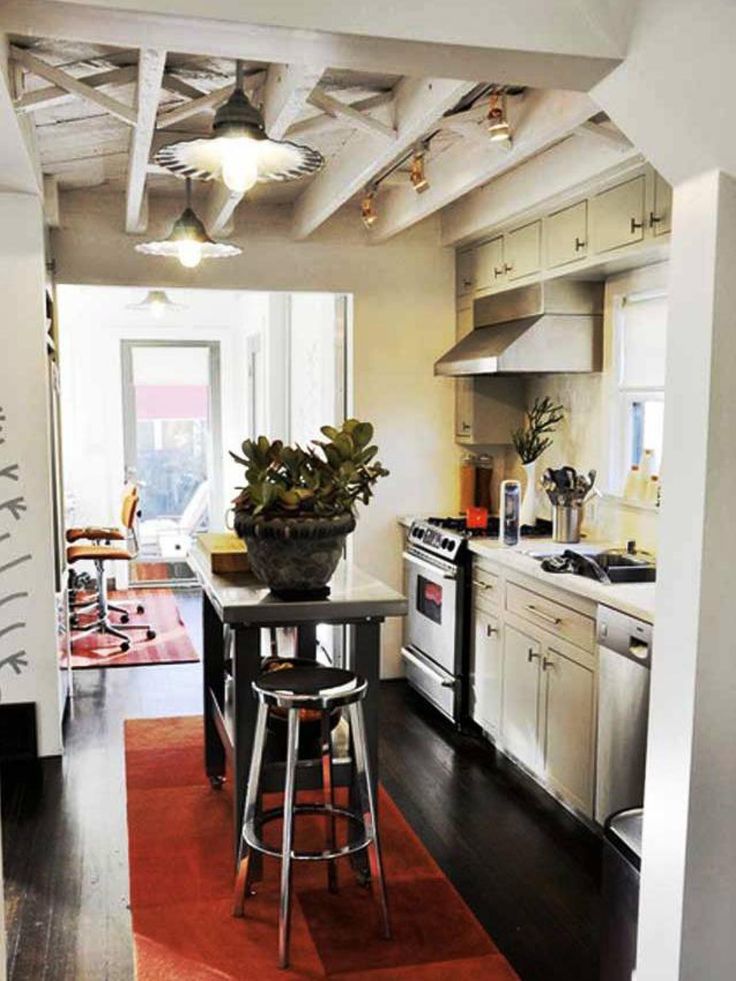 '
'
2. Use every inch of space in a galley kitchen
(Image credit: Haris Kenjar)
‘I love a classic galley kitchen idea,’ enthuses Seattle-based designer Heidi Caillier . ‘They just feel so intimate and special, and there is something very appealing about them practically. They force you to be thoughtful in how you lay out every inch, and I also like the mentality of using all of your kitchen versus just that one corner between the range and the sink.’
In the right colors, in this case Farrow & Ball’s French Gray, Heidi also believes that galley kitchens can feel really cozy, ‘like a warm, inviting cocoon’. A mix of kitchen cabinets and open kitchen shelving ideas will ensure it feels light and airy.
3. Use an island to separate an open plan space
(Image credit: Mark Bolton)
In recent years, a third galley scenario has evolved. 'Modern galley kitchens can be part of a much larger space featuring a wall-hugging galley run with a long island running parallel, separating a living or dining area beyond,' explains Paul O’Brien, director, Kitchens International .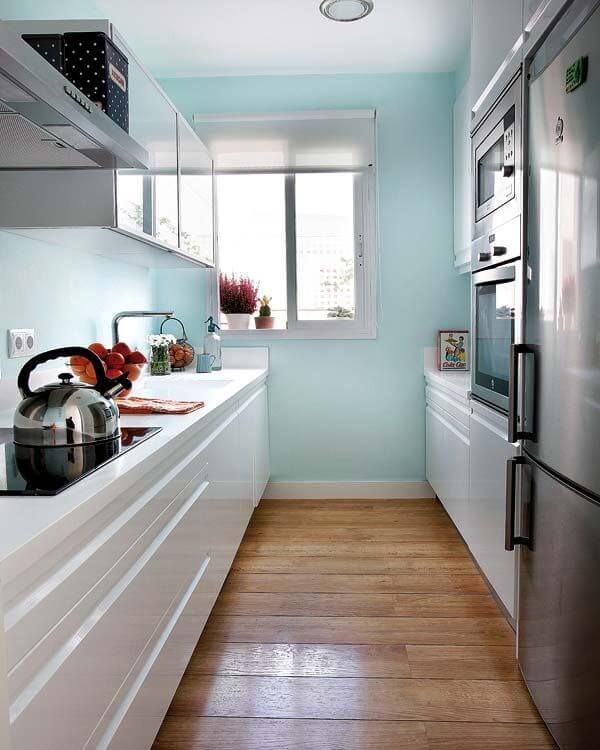 Although following the double galley footprint, it feels different, as it is a lighter, more open and more sociable space.
Although following the double galley footprint, it feels different, as it is a lighter, more open and more sociable space.
4. Plan for cabinetry without handles
(Image credit: Future / James Merrell)
Create a feeling of spaciousness by opting for sleek, handleless units, pale-colored finishes and glossy, light-reflecting surfaces, with clutter kept to a minimum. Technological advances in push-open and close doors means that it has become possible to dispense with handles in both wall and base cabinets.
A handleless scheme, particularly one in a cool white kitchen , can appear clinical, so adding a few natural materials will give it a softer edge. Think about including colorful kitchen rug ideas or patterned kitchen backsplash ideas.
5. Use lighting to your advantage
(Image credit: Artemide)
When space to wow is limited, look upward for inspiration. In this narrow, galley kitchen in Copenhagen a pair of outsized designer suspension lights by Artemide take full advantage of the room’s epic height, while the arctic white ceiling cuts a crisp note against mossy green walls.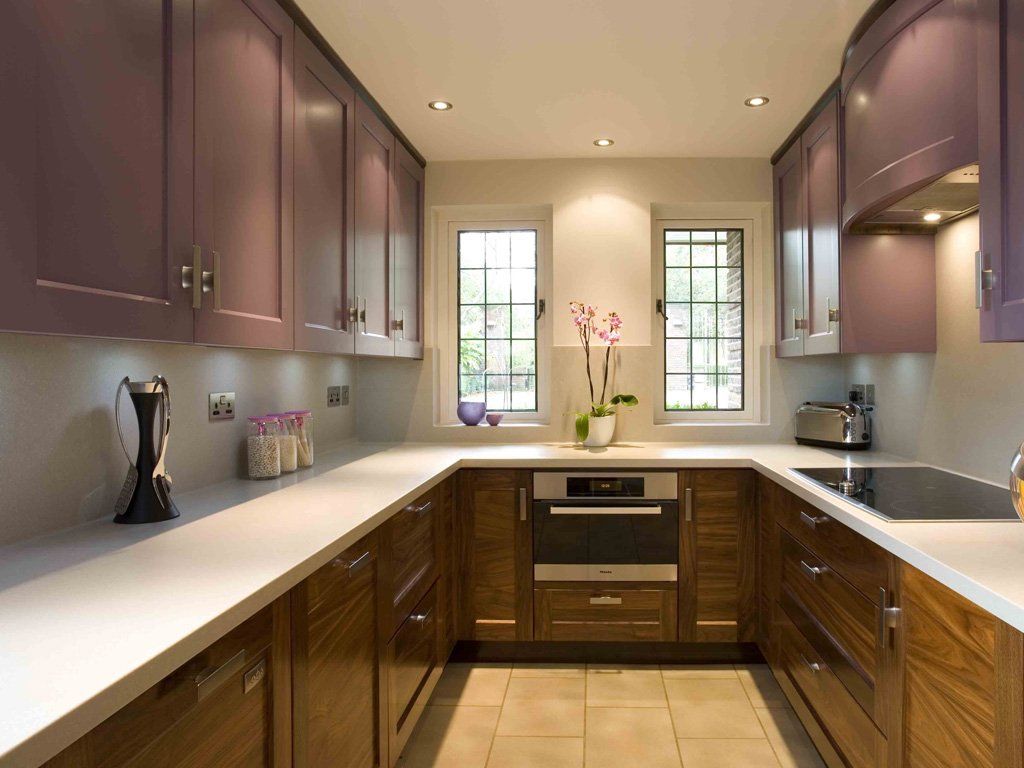 Natural wood in rich tones has a cosying effect; note how Dinesen’s plank flooring has been carried onto the backsplash to take the timber higher without reducing the room’s width. For extra character, the hand-welded sink area in darkened brass will age and patina with time and use.
Natural wood in rich tones has a cosying effect; note how Dinesen’s plank flooring has been carried onto the backsplash to take the timber higher without reducing the room’s width. For extra character, the hand-welded sink area in darkened brass will age and patina with time and use.
6. Create a space for dining
(Image credit: OWO)
Galley kitchens are celebrated for their cooking efficiency but they’re usually found in enclosed rooms and therefore not the most sociable of arrangements. If you have sufficient length available, a banquette-style nook or breakfast bar is a great way to provide somewhere for people to chat, without interrupting culinary progress. The key is to choose a table that won’t impede access into the heart of the small kitchen.
Here, a built-in seat with storage above and below means the dining area doesn’t steal precious cupboard space, and the table and stools can easily be pushed in tight when not required.
7. Extend in glass
(Image credit: Future)
Natural light is everything when you’re cooking in narrow confines.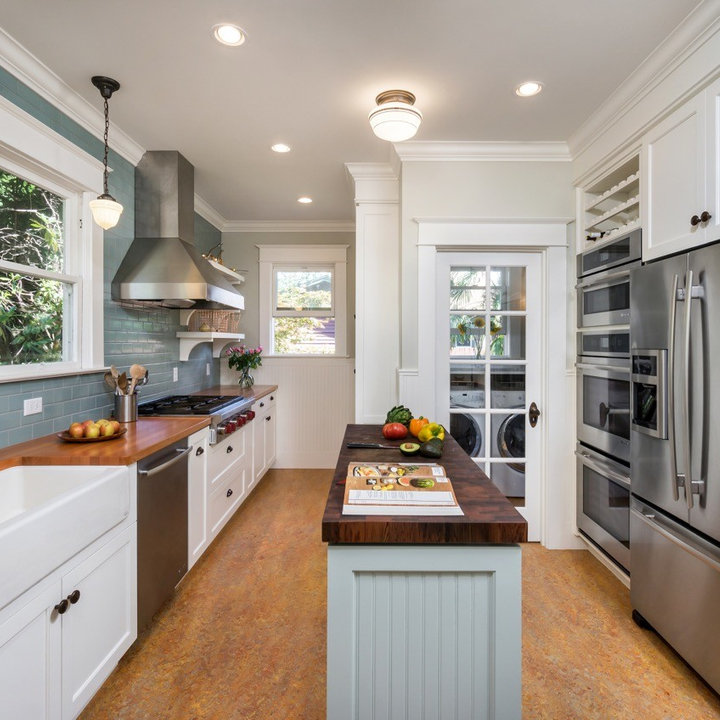 A lean-to glazed kitchen extension idea has added precious dining space to this narrow kitchen, while opening the views out to the garden all year round.
A lean-to glazed kitchen extension idea has added precious dining space to this narrow kitchen, while opening the views out to the garden all year round.
‘The eye is drawn to the light and the dining area, which is used by the whole family throughout the day and has become the focal point within this bright, open space,’ explains Lisa Morton, director, Vale Garden Houses . Bold chequered flooring, installed diagonally, has a widening effect, while helping to disguise an unavoidable step between the original and new living spaces.
8. Consider the layout – and remove obstacles
(Image credit: Future / Jonathan Gooch)
When trying to make the most of limited space, take time to consider the natural flow through rooms, recommends Victoria Wormsley of French-Brooks Interiors . ‘Think about how people are going to pass through the space and ask if you really need each and every door (but be aware that some will need to be retained for fire regulations, particularly when it comes to narrow kitchens).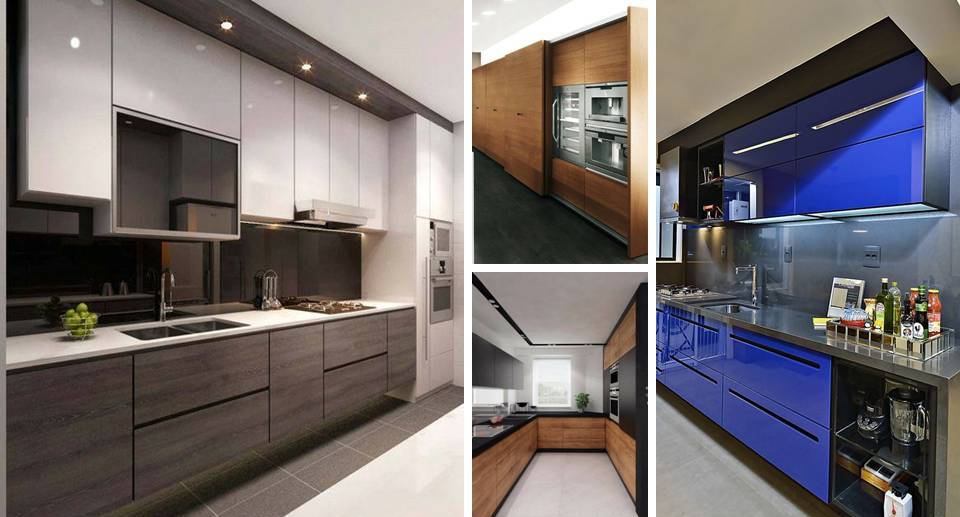 Where possible, remove doors and architraves to improve the flow.’
Where possible, remove doors and architraves to improve the flow.’
9. Clear the clutter in a narrow kitchen
(Image credit: Future / Jan Baldwin)
One way to create the illusion of space in a narrow kitchen is to rid the countertop areas of clutter but be realistic before setting out. It’s never going to be entirely possible to live without various small useful things, which need storing away somewhere, believes Sandrine Zhang Ferron, founder of Vinterior . ‘So create small areas of small kitchen storage ideas that are both practical and add style to your home, from roomier pieces like kitchen cabinets down to biscuit tins to squeeze into a corner.’
10. Put color and lighting at the forefront
(Image credit: Future/James Merrell)
Well-chosen kitchen color ideas can work wonders in disguising awkward or narrow kitchen space. Judy Smith of Crown Paint , says the best approach is to paint the shell of the room white, which will open up the space, then to apply concentrated color to key focal points.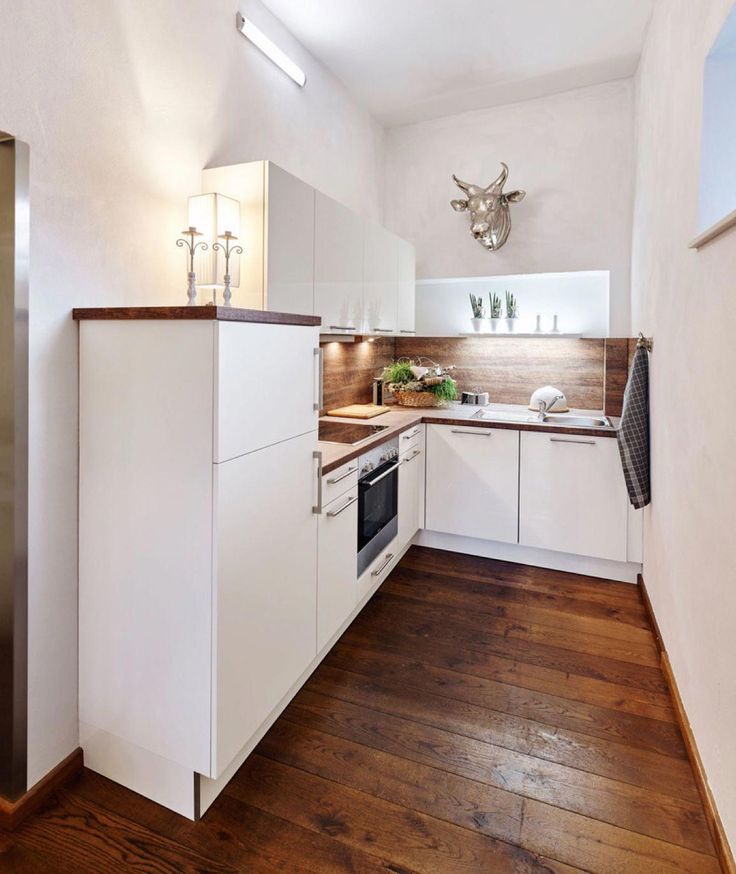
'Choose the most attractive features in the room then paint these in contrasting shades to make them stand out. This will also pull the emphasis away from less attractive elements.'
Another saviour is kitchen lighting, which can give a low ceiling a sense of height or put strange angles in the shadows. A lighting designer will be able to advise on everything from high-precision controls to the most suitable color for bulbs. 'In an awkwardly shaped kitchen, flexible lighting can be adjusted to control the direction and spread of light effectively.'
How can I make the most of my narrow kitchen?
With careful planning, narrow kitchens are ideal spaces for cooks. Efficient and compact, they need fewer steps to get around and make the most of a restricted space.
'Galleys can be really stylish. Long lines of countertops create strong horizontal planes that look incredibly sleek,' says Hugo Tugman, chairman and founder of Architect Your Home.
A one-wall galley is best suited to one person cooking, as it requires linear movement from one activity to the next. For ease of use, separate the cooking and wet zones by a reasonable length of worktop but, if possible, avoid putting the sink and cooker at opposite ends of the room.
For ease of use, separate the cooking and wet zones by a reasonable length of worktop but, if possible, avoid putting the sink and cooker at opposite ends of the room.
'You’ll gain wide work surfaces but may feel very cramped when cooking or washing up,' explains Graeme Smith, conceptual designer at Second Nature Kitchen s. A double galley allows the traditional work triangle, with a cooker and fridge on one side and the sink opposite, and gives more room for two cooks to work together.
In recent years, a further galley scenario has evolved. 'Modern galley kitchens can be part of a much larger space featuring a wall-hugging galley run with a long island running parallel, separating a living or dining area beyond,' says Paul O’Brien, director of Kitchens International. Although conforming to the double-galley footprint, it feels different, as it is a lighter, more open and more sociable space.
What is a narrow kitchen called?
A narrow kitchen is often referred to as a galley kitchen. The galley kitchen layout is one of the classics in kitchen design and takes its name from a ship’s kitchen, which was traditionally squeezed into a long narrow space but needed to be super efficient. In today’s homes, the two options – single galley comprising one long run of units, or double galley with parallel runs – give rise to a particularly efficient cooking space.
The galley kitchen layout is one of the classics in kitchen design and takes its name from a ship’s kitchen, which was traditionally squeezed into a long narrow space but needed to be super efficient. In today’s homes, the two options – single galley comprising one long run of units, or double galley with parallel runs – give rise to a particularly efficient cooking space.
Jennifer is the Digital Editor at Homes & Gardens. Having worked in the interiors industry for a number of years, spanning many publications, she now hones her digital prowess on the 'best interiors website' in the world. Multi-skilled, Jennifer has worked in PR and marketing, and the occasional dabble in the social media, commercial and e-commerce space. Over the years, she has written about every area of the home, from compiling design houses from some of the best interior designers in the world to sourcing celebrity homes, reviewing appliances and even the odd news story or two.
Small kitchen ideas – make the most of a small space
The kitchen is the engine of the home, and more recently it's morphed into the main living area, too.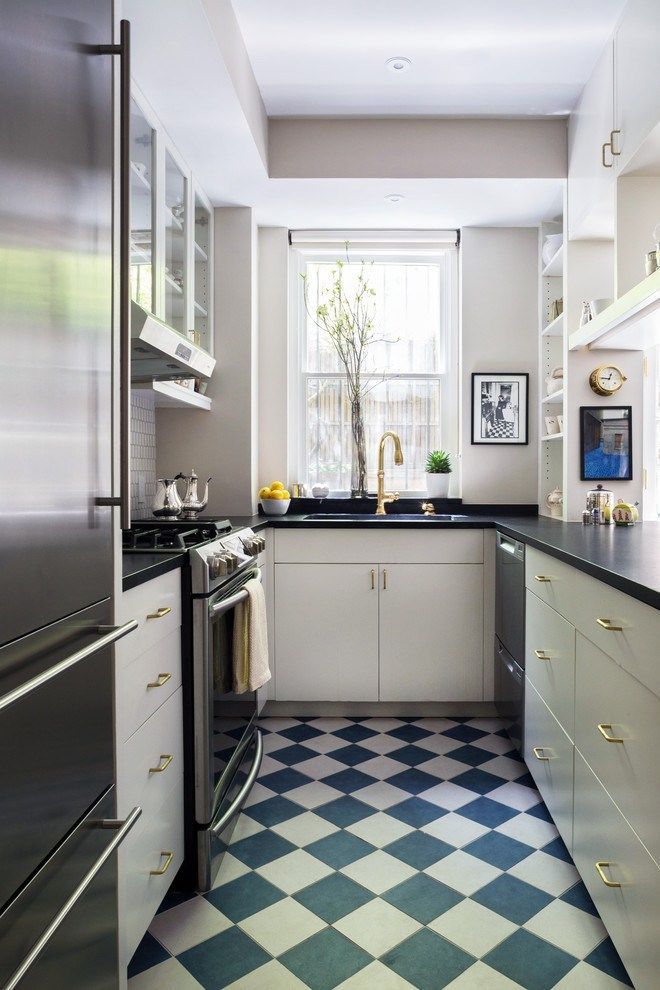 But the floorplans of many homes in the UK don't provide a huge amount of space for them. Many of us are working with small kitchen ideas, so if you're frustrated by the lack of space in yours, you're in good company
But the floorplans of many homes in the UK don't provide a huge amount of space for them. Many of us are working with small kitchen ideas, so if you're frustrated by the lack of space in yours, you're in good company
The constraints of a petite kitchen means we have to be more inventive with our kitchen ideas. Plus, we think you can definitely afford to be more daring in a small space than in a huge kitchen complete with a kitchen island and American-style fridge. Small kitchen design also means less money spent on cabinetry, potentially leaving more budget for lighting and appliances.
Small kitchen ideas
Layout is the first thing to consider when thinking about how to design a kitchen that's short on space. Ben Burbidge, Managing Director at Kitchen Makers says, 'When presented with a small kitchen it is essential that the layout is carefully considered to make sure every inch of the kitchen is utilised. The age-old advice to think of the fridge, oven and sink as points on a triangle and ensure the distance between each is not too limited holds true even in small or awkward spaces.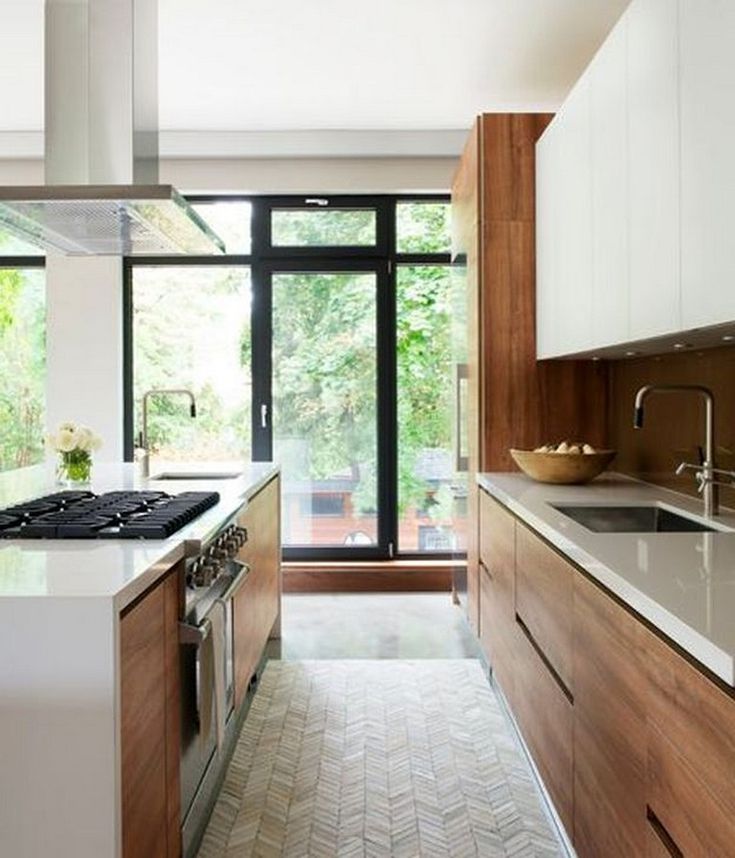
'Carefully selected colours and materials can help to make your kitchen feel more spacious,' Ben Burbidge adds. 'Consider using mirrored or light-coloured splashbacks with reflective properties to make your room appear larger. In terms of colour schemes it is not necessary to stick to a bright palette in small kitchens, so don’t be afraid to use colour.'
1. Go for simple black and white
(Image credit: Future PLC)
Keep the kitchen design really simple with black cabinetry below and a white backsplash and open shelving above. Often described as a 'tuxedo kitchen' this monochromatic look is at once traditional and modern. The black grounds the scheme and the white walls make it feel fresh.
2. Blend woods and whites
(Image credit: Future PLC / Dan Duchars)
Stick to a Scandi-inspired wood and white scheme for a bright and airy feel. Large swathes of wood flooring and white cabinetry will create a calm and clutter-free first impression. You could always incorporate some open shelving and add colour with plants or coloured plates and bowls. Warm-toned lighting will stop it from feeling cold.
You could always incorporate some open shelving and add colour with plants or coloured plates and bowls. Warm-toned lighting will stop it from feeling cold.
3. Tongue and groove it
(Image credit: Future PLC)
Why not opt for vertical tongue and groove wood panelling in your small kitchen area? Go all the way to the ceiling or stop halfway up, either option adds character and makes your kitchen feel more complete. A great option for anyone researching country kitchen ideas, this panelling brings a touch of farmhouse style that isn't in your face. You can buy tongue and groove MDF wall panels at Homebase and they're a relatively easy DIY to install.
4. Add a fun light feature
(Image credit: Future PLC / David Parmiter)
Incorporate fun lighting like this industrial copper wire open shelving unit with exposed bulbs. This creates a distinct zone and an eye-catching feature. Small kitchens can feel bland so think of ways to add a level of surprise or visual interest to detract from the fact it's a small space.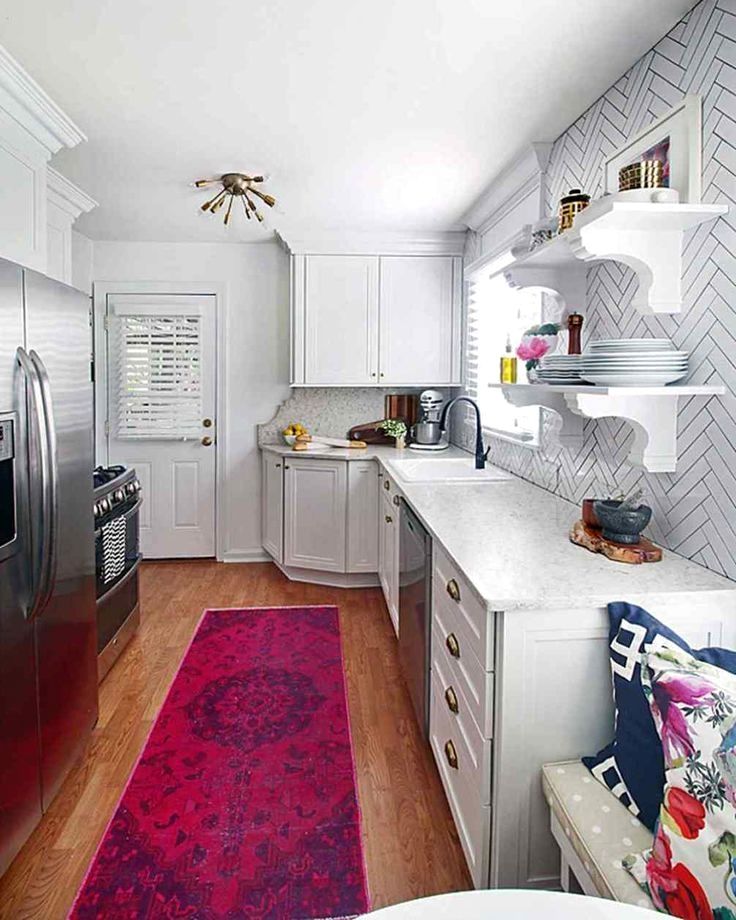
5. Lean into Japandi
(Image credit: Future PLC)
'Japandi designs not only infuse kitchens with a minimalist and calm vibe but also really lend themselves to small spaces,' comments Ideal Home Deputy Editor (digital), Rebecca Knight. 'Indented handles and a matt black tap are an aesthetically pleasing and contemporary choice. Pair warm wood worktops and shelving with shiny tiles to add texture and warmth.'
6. Hang lots of hooks
(Image credit: Future PLC / Lizzie Orme)
Use the walls and keep things nice and open by hanging plenty of storage hooks like these black rail and hooks used to store mugs. It means you have all your mugs on display and easy to grab for a cup of tea, and along with open shelving it's a way to avoid upper cabinets, which can sometimes feel a little heavy in a tight space.
7. Lead the eye up with a painted ceiling
(Image credit: Dulux)
A ceiling painted in an unexpected colour will lead the eye up and create the illusion that your small kitchen is taller than it really is.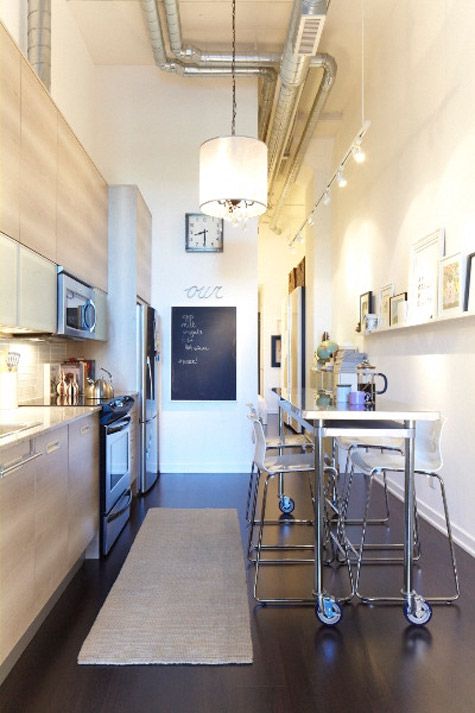 'Colour in the kitchen is like seasoning in food – walls and units can appear bland without it,' says Marianne Shillingford, Creative Director, Dulux . ‘For small kitchen paint colours, consider adding a dollop of colour to the ceiling rather than the walls, and if you can paint them, add a splash of colour to the units too.'
'Colour in the kitchen is like seasoning in food – walls and units can appear bland without it,' says Marianne Shillingford, Creative Director, Dulux . ‘For small kitchen paint colours, consider adding a dollop of colour to the ceiling rather than the walls, and if you can paint them, add a splash of colour to the units too.'
You could use an uplifting blue, such as Bright Skies in otherwise white small kitchen design or, if you're feeling more ambitious, try a soft tonal checkerboard effect or soft wavy lines in different sheen levels of the same colour. Marianne also suggests combining colours in bands and blocks across the walls and ceiling if you have white, grey or natural wood units.
According to the colour professional, glossy ceilings are becoming a big trend, too. And they do look amazing – but only if the surface you are painting is really smooth and you have all the right tools for how to paint a ceiling.
8. Think about how you use the space
(Image credit: Future PLC/ Ryan Wick)
Whether it's big or small, we all want our kitchen to look beautiful.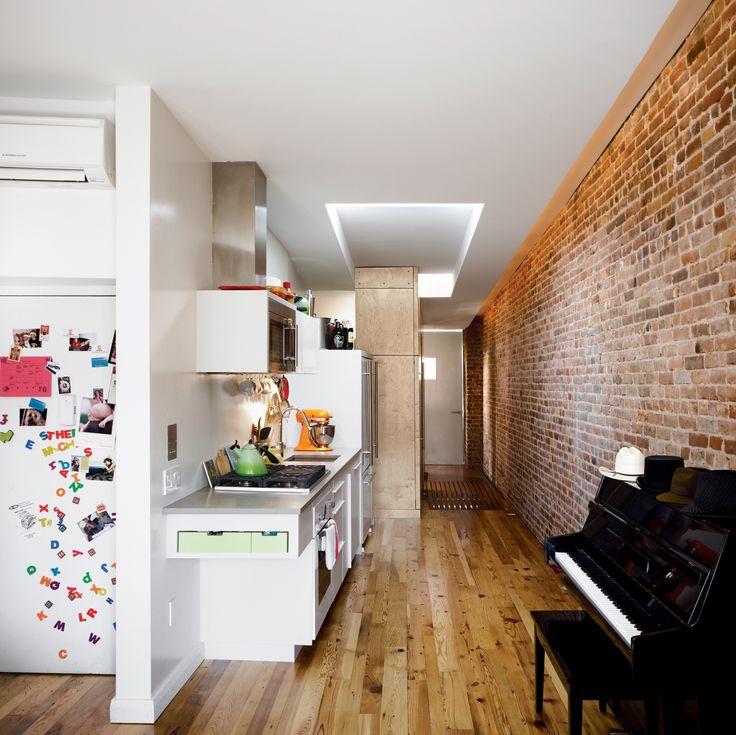 However, as the most dynamic room in the home, functionality is just as important as looks. Think about how you use your kitchen day to day and what works and doesn't work.
However, as the most dynamic room in the home, functionality is just as important as looks. Think about how you use your kitchen day to day and what works and doesn't work.
‘Small kitchen design typically has to work twice as hard due to the space constraints,' comments Ben Burbidge. 'Planning is therefore all-important to make the most of your space, so consider how you cook and the equipment, crockery, and types of food you want to store.'
Ben goes on to say that keen cooks tend to focus on smart kitchen storage ideas to store cookware and maximise counter space for food preparation. But if you prefer simple fresh food, ensuring you have enough room for a generous fridge may feel more important.
9. Select tiles in soothing natural tones
(Image credit: Future PLC / Joanna Henderson)
Carefully selected tiles are your secret weapon when designing or updating small kitchen ideas. 'Matt tiles in light, muted and natural tones or highly reflective gloss tiles are great ways of creating a sense of space,' says Adrian Blundell, Production Director, Craven Dunnill Jackfield . Steer away from small or heavily patterned tiles, as while they can create a striking feature wall, they'll likely overpower a small space.
Steer away from small or heavily patterned tiles, as while they can create a striking feature wall, they'll likely overpower a small space.
'Mixed media, including combinations of ceramic and stone are becoming increasingly popular to create contemporary-inspired geometric layouts, perfect for modern kitchen ideas.'
10. Create depth with textured walls
(Image credit: Kalklitir limepaint)
If you're tight on space, why not let the walls do the talking? Lisa Slack, Head of Product, Thomas Sanderson suggests using a limewash finish on your walls. 'The stone-like effect allows your kitchen to adopt some texture and project some warmth,' she comments.
Then, you could always add a bookshelf to your kitchen wall and fill it with cookbooks, pots and pans. The open shelves against the textured wall will give a rustic feel to the small kitchen ideas and distract from the lack of space.
11. Add luxurious small details
(Image credit: Future PLC / Matthew Williams )
'Whatever type of cook you are the aesthetic is important,' says Ben from Kitchen Makers.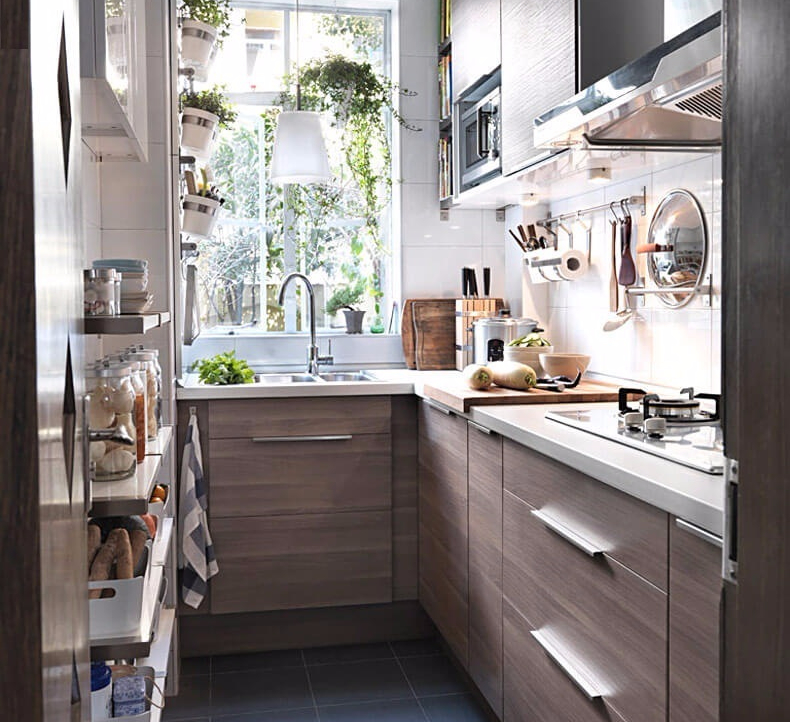 'Unfussy designs with clean lines tend to work best in these types of spaces, however, you can add a touch of luxury and style by specifying more decorative handles or a statement backsplash and good lighting.’
'Unfussy designs with clean lines tend to work best in these types of spaces, however, you can add a touch of luxury and style by specifying more decorative handles or a statement backsplash and good lighting.’
12. DIY a crittall-style mirror
(Image credit: Future PLC / Colin Poole)
Don't discount DIY options, says Looeeze Grossman, The Used Kitchen Company . 'Masking off sections of the wall to paint a geometric print or using stick-on mirrors to create a crittall-style wall can add interest while remaining inexpensive,' she says.
Place mirrors behind shelving to make small kitchen ideas feel twice as big.
13. Rethink kitchen furniture
(Image credit: Future PLC/David Giles)
If you can't live without a dining table in your kitchen – whether to eat, work from home or entertain - you can still make this work with small kitchen design.
Opt for narrow and small kitchen table ideas and push it completely against the wall. For seating, combine standard dining chairs with a bench – or two – that you can pull out when needed.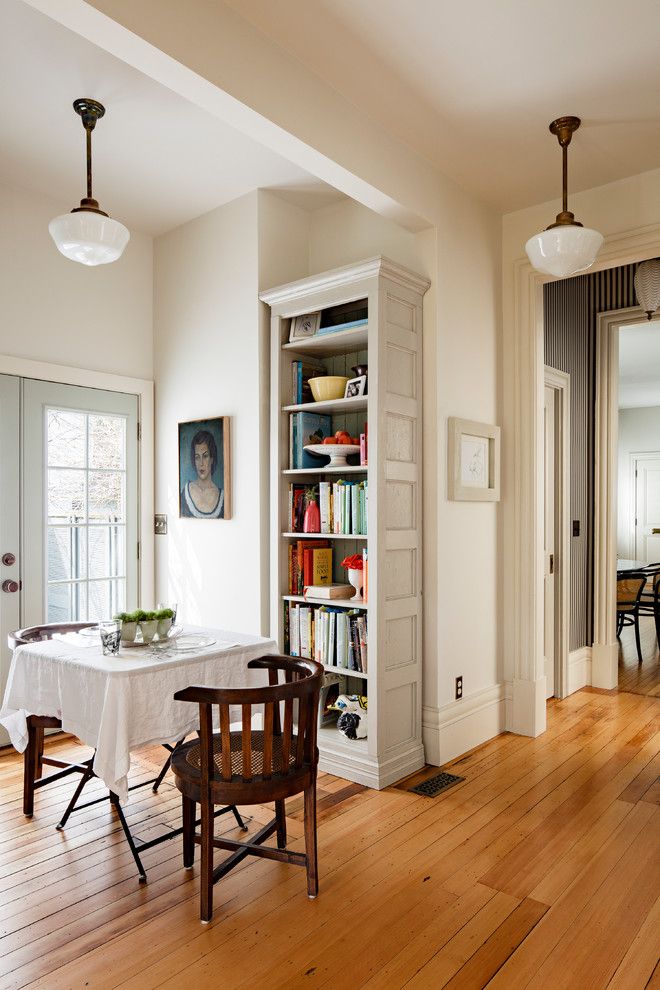
14. Build a mini peninsula
(Image credit: Olive & Barr)
'Galley kitchens are favourable in a small spaces,' says Al Bruce, Founder, Olive & Barr . 'They instantly offer more flexibility especially in terms of storage space, as the layout is made up of two rows of cabinets facing each other to create a galley between them, removing the need for corner cupboards in favour of using every millimetre of space.'
If you've always dreamed of kitchen peninsula ideas you can still make this work in a slimline galley space. Simply take your cabinetry out by a foot to fit one set of small drawers. As a result you have extra storage, a visual zoning and a place to gather and chat while someone's cooking.
15. Distract with pattern
(Image credit: Future PLC)
Distract the eye by going bold. A patterned island or surface will direct attention directly to it, niftily making guests not notice how small the rest of the space actually is. Choose a large repeating pattern rather than small so it doesn't seem too busy and cluttered.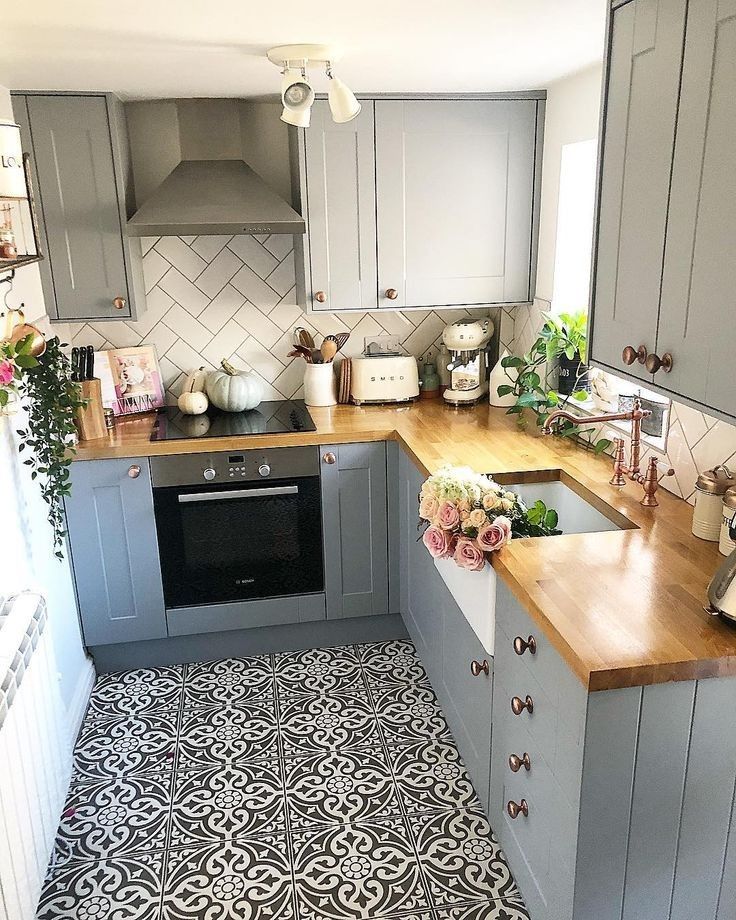
16. Up the sense of space with your layout
(Image credit: Future PLC/Harvey Jones)
'Maximising storage is at the top of most homeowners’ wish lists, however, this can be tricky in small kitchen ideas,' says Vlad Putjatins, Kitchen Designer, Harvey Jones . 'If you are lucky enough to have tall ceilings, creating two runs of shorter, medium height wall cabinets stacked on top of each other will help to make the most of the vertical space.'
'For smaller kitchens, I always recommend leaving a gap between the cabinets and the ceiling, as it gives you a clear visual of the room’s full dimensions and avoids enclosing the space.' Enhance this effect even further by boosting light levels. Think floor-to-ceiling windows and, if possible, a skylight.
17. Choose alternative storage solutions
(Image credit: Future PLC/James French)
Think outside the box when it comes to how you store kitchen items. Think what you might do with small living room ideas, for example.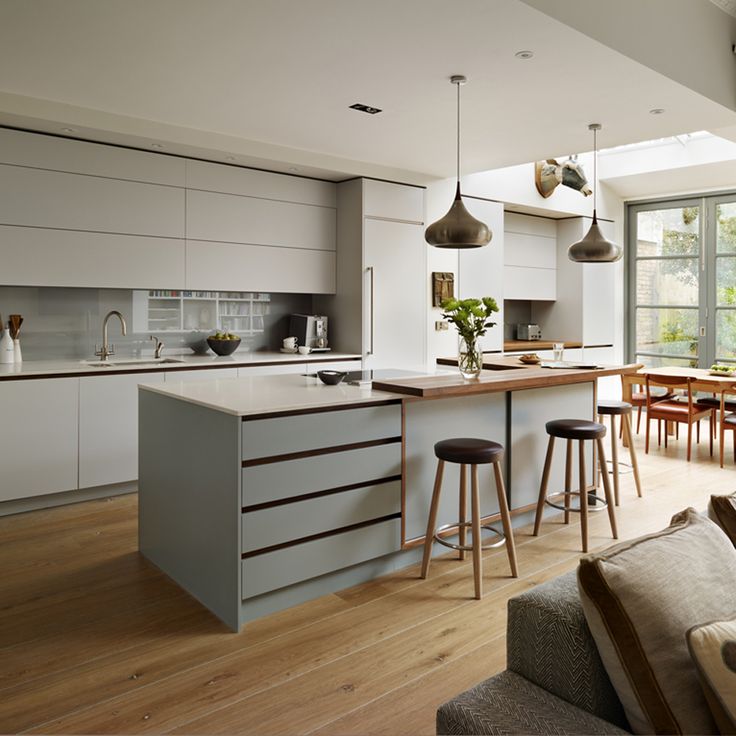 Slimline ladder style shelving units are perfect for minimising how much floor space you're taking out without compromising on storage levels. Plus, they're a delight to style!
Slimline ladder style shelving units are perfect for minimising how much floor space you're taking out without compromising on storage levels. Plus, they're a delight to style!
18. Build in booths
(Image credit: Life Kitchens)
Kitchen booth ideas are always a plus, but they work especially well for small kitchen design. Build in your banquette or booth attached to the kitchen peninsula or cabinets so everything is in one.
If you really need to save on space then rely only on the bench seating and only bring in extra chairs as and when needed.
19. Combine open and closed shelving
(Image credit: Benchmarx)
'A small space shouldn’t restrict you in terms of colour, but there are important considerations to bear in mind,' advises Ruth from Benchmarx. 'It is inevitable that darker coloured units will absorb the light. So it is best to keep these to floor level to maximise storage without it becoming oppressive.'
Less is more, so instead of filling all available wall space with units, opt for open shelving, which gives a contemporary look and avoids enclosing the space.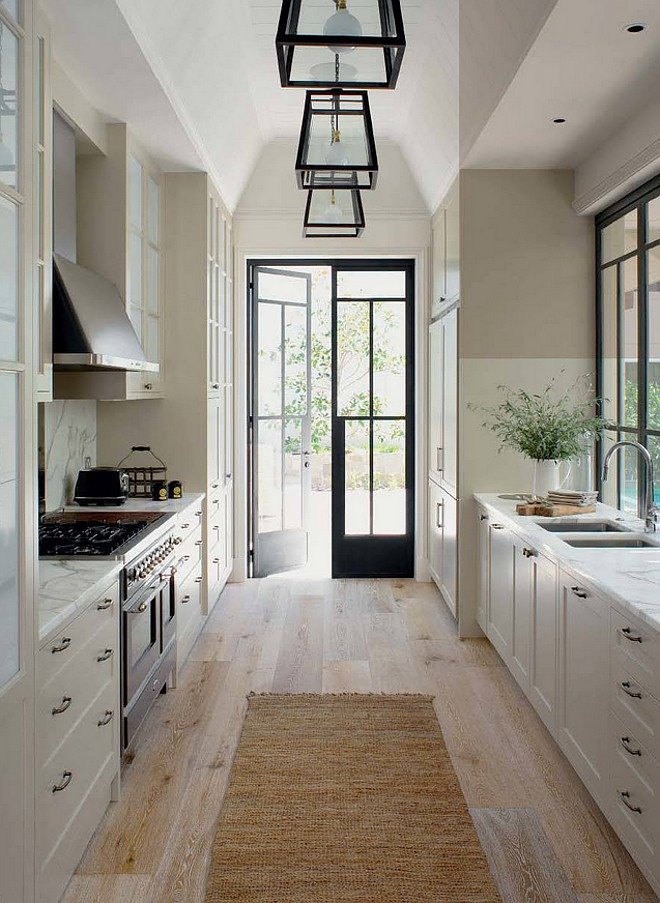
20. Use partitions to separate tasks
(Image credit: Second Nature)
In a small kitchen, particularly with small galley kitchen ideas, it can feel like it's impossible to properly zone the space. 'Integrating a partition means you can separate functions out more and give designated prep areas within the room,' advises Graeme Smith, head of design, Second Nature Kitchens .
Opt for a glass half partition to keep the room feeling open and allow light to pass through. Treat one section as similar to a prep kitchen, and keep your appliances and larger utensils hidden from casual viewing.
21. Think vertically
(Image credit: Olive & Barr)
Storage is undoubtedly one of the most important considerations in any kitchen, but none more so than in a small kitchen ideas. 'One wall kitchen is ideal for those with a smaller space that still want an impactful kitchen,' says Al from Olive & Barr.
'The simplicity of a one wall layout is that you can maximise efficiency without compromising on functionality.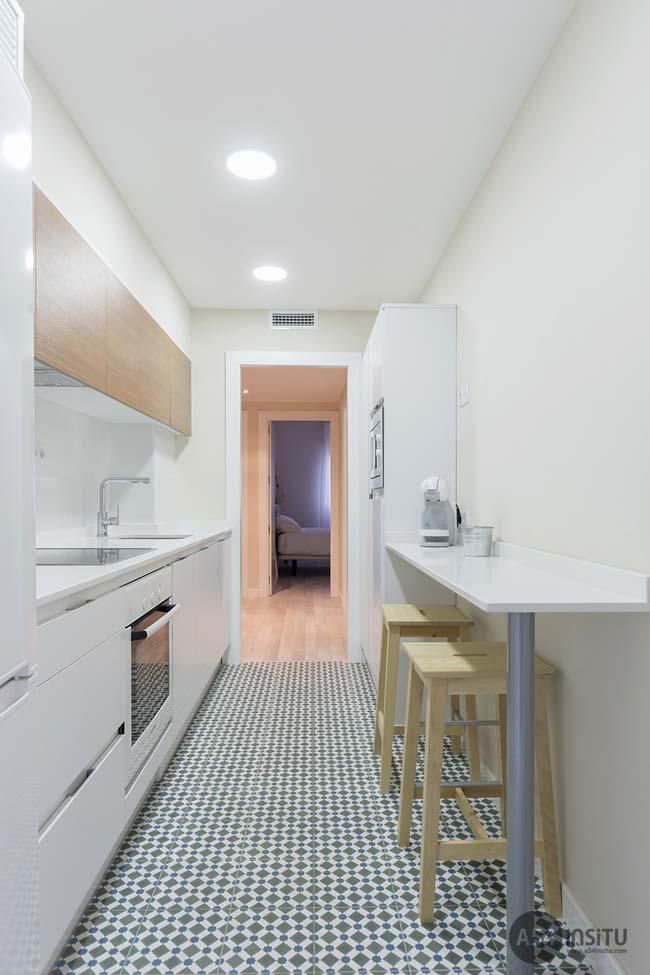 You need to think vertically and create as much extra storage space as possible by utilising the height of your walls.'
You need to think vertically and create as much extra storage space as possible by utilising the height of your walls.'
Once you've planned where this storage is going to go, start to think about light. With small kitchen design, wall-to-wall cabinetry will block out light, making the space seem smaller and more cramped. Resolve this by including some open storage and shelving. Using this on the top half of the wall will help make the room appear taller, too.
22. Zone with flooring
(Image credit: Wren Kitchens)
Contrary to popular belief, small kitchens can absolutely be used as petite kitchen-diners. Make the space feels like two separate rooms without compromising on space by clever zoning.
Choose two distinct flooring styles and use them to trick the eye into seeing two spaces. A patterned option is best for the kitchen as it is more energising, and helps disguise spillages. Meanwhile, calming more neutral styles work well for a relaxed dining zone.
23. Break the plan
(Image credit: Future PLC/Magnet)
Broken plan is the new open plan, and small kitchens ideas can benefit from this style of layout. What you're essentially doing is zoning the room with either full partitions which can be opened or pulled back when needed, or half partitions to give the sense of separate areas. This allows you to differentiate cooking, dining and living areas while preserving the overall open plan feel of the space.
For partition alternatives, look at freestanding furniture, slatted screens or Crittall doors.
24. Incorporate a slim breakfast bar
(Image credit: Future PLC/The Main Company/Chris Snook)
'Utilise the space of your kitchen by creating a breakfast bar area,' suggests Hayley from Magnet. 'While it may seem a challenging fit, they are an excellent option if you don’t need a lot of cupboard storage space. However, breakfast bars can double as both a preparation and dining space, creating a multifunctional approach to your kitchen design.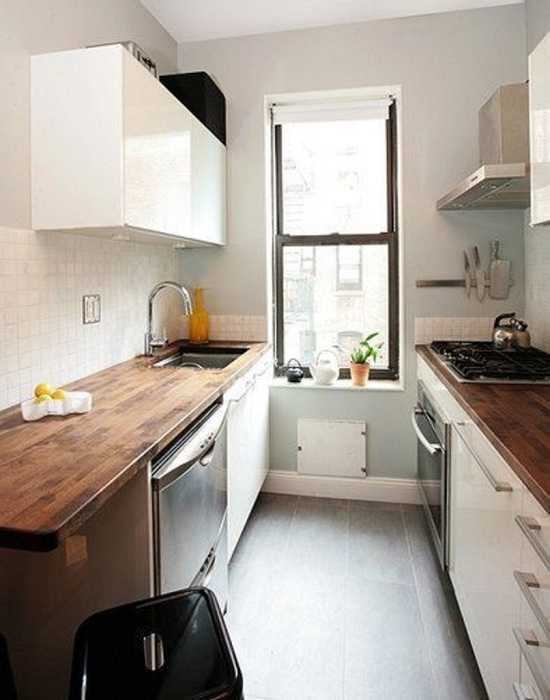
Look for slim options which can be built onto peninsulas or islands to further save on space.
25. Pay attention to your flooring
(Image credit: Future PLC/Quorn Stone)
'Small kitchen design requires careful thought and consideration to give the illusion of a larger space,' notes Isabel Fernandez, Director at Quorn Stone . 'Contrary to belief we often find a larger tile can work well at achieving this. A smaller tile results in lots of grout joints which can enclose the space and detract the eye from the tile. We often suggest a 900 x 600 tile as it is a versatile size that works well in both smaller and larger areas.'
'Alternatively wood effect porcelain is becoming increasingly popular in tighter spaces due their long and narrow format,' continues Isabel. 'If you choose a complementary grout colour it makes the grout less noticeable which again helps to open the space out.'
26. Save space with a sliding door
(Image credit: Future PLC)
In a small kitchen ideas where space is tight you may be tempted to remove the door to avoid the feeling of claustrophobia.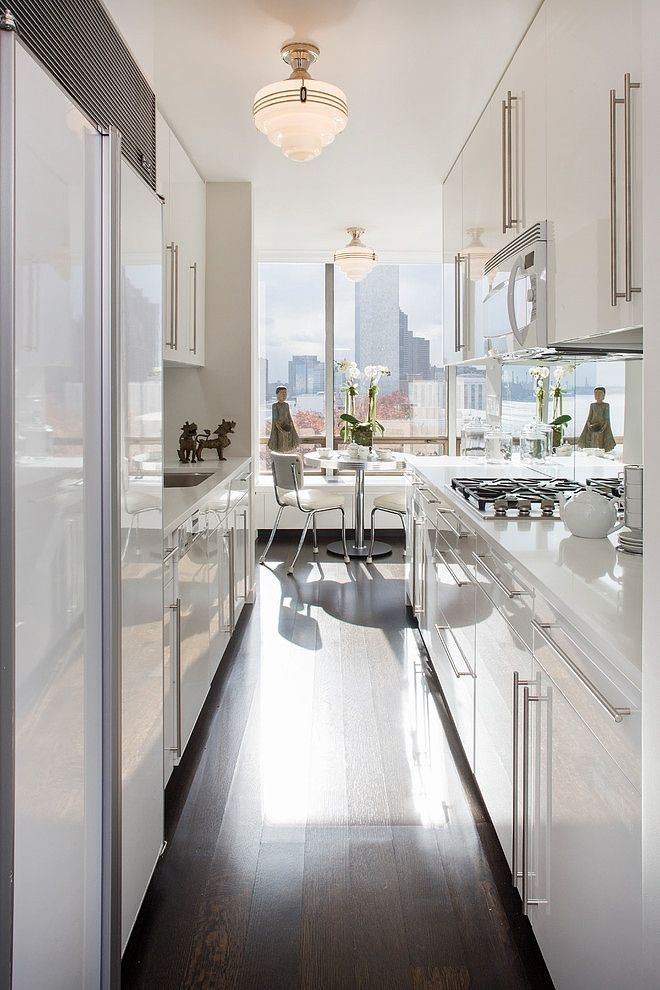 But a door to a kitchen is a handy tool to be able to contain the smells of cooking from filling the rest of the house.
But a door to a kitchen is a handy tool to be able to contain the smells of cooking from filling the rest of the house.
Consider sliding doors, which are the ultimate space-saving room divider. Even when it is pulled closed, a glass design means it doesn't act as a solid barrier from one space to the next.
27. Think about walkways
(Image credit: Tom Howley)
'Kitchens need to be as functional as they are beautiful,' says Tom Howley, design director, Tom Howley . 'If you take a standard galley kitchen to have a 6ft width and a 12ft length, island and peninsula counters are rarely an option in this sort of space. The importance of walkway space should be a key consideration.'
'When designing your layout for small kitchen ideas, always leave a metre of walkway space either one or two sides of your worktop, island, or peninsula counter. This is a functionally and aesthetically effective dimension to keep in mind.'
28. Make space with collapsible furniture
(Image credit: Ikea)
Choose collapsible furniture to create space when it's not needed.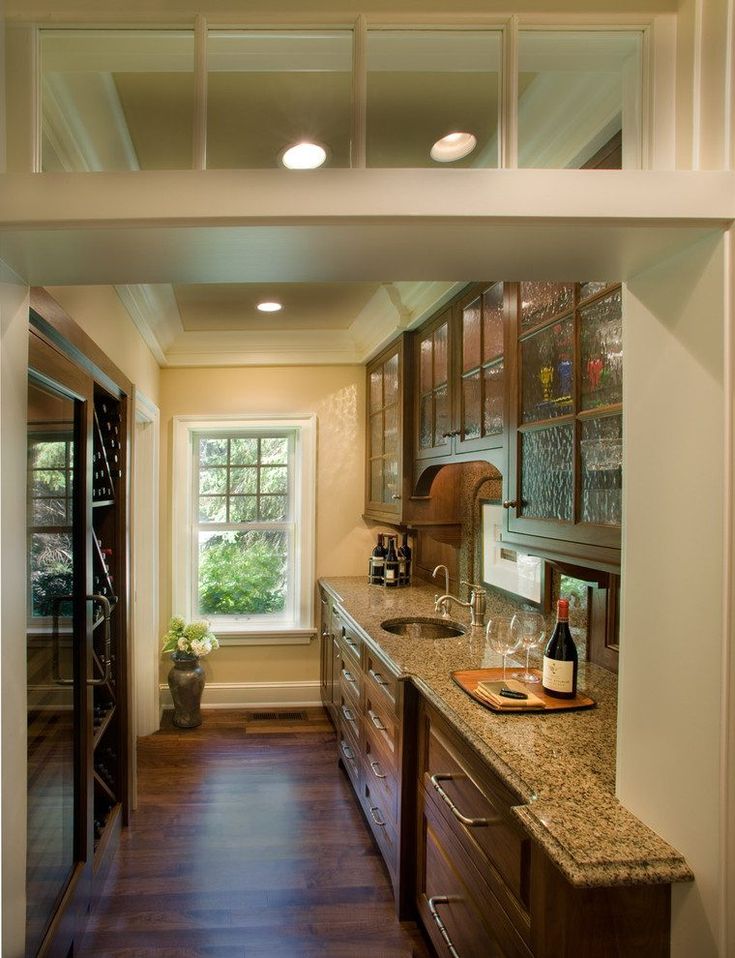 Look at including an extendable table, which can provide an island of sorts. Then, at mealtimes, it can extend out to form a sizeable dining table.
Look at including an extendable table, which can provide an island of sorts. Then, at mealtimes, it can extend out to form a sizeable dining table.
The table could even provide valuable desk space for working from home. Due to the nature of collapsible furniture the space isn't in any way compromised by the need for a table. It's a highly efficient way to make small kitchen ideas work to its full potential.
29. Get creative with corners
(Image credit: Future PLC/Fiona Walker-Arnott)
A tiny kitchen still has to cater for even the most basic of food prep and serving, which requires a lot of 'stuff'. This means it is key to use every last bit of available space by being savvy with the design solutions.
Ensure the units are as tall as physically possible to elongate the space. Making the most of magic corners and other clever mechanisms will also help use every millimetre of space.
Hanging glasses below the cupboards is a clever kitchen storage idea. It not only uses up space that is otherwise redundant, but more importantly it frees up storage space inside the cabinets.
It not only uses up space that is otherwise redundant, but more importantly it frees up storage space inside the cabinets.
30. Use one side for floor-to-ceiling storage
(Image credit: Kitchen Makers)
When space is at a premium, clever small kitchen design comes to the rescue. ‘When presented with a small kitchen ideas it is essential that the layout is carefully considered to make sure every inch of the kitchen is utilised,’ says Ben from Kitchen Makers.
‘Creating a bank of cabinetry along one wall is a great way of streamlining and opening up the space. Tall wall units are particularly suited to narrow, galley style kitchens, as using this space ensures the area feels less cramped than if filled with larder style dressers.'
31. Open up with a light and airy design
(Image credit: Future PLC/David Giles)
If you're designing a new kitchen to make your small space more useable, don't overlook the finer details. 'Small details, such as the use of materials, is key when designing a small kitchen,' says Tom Howley.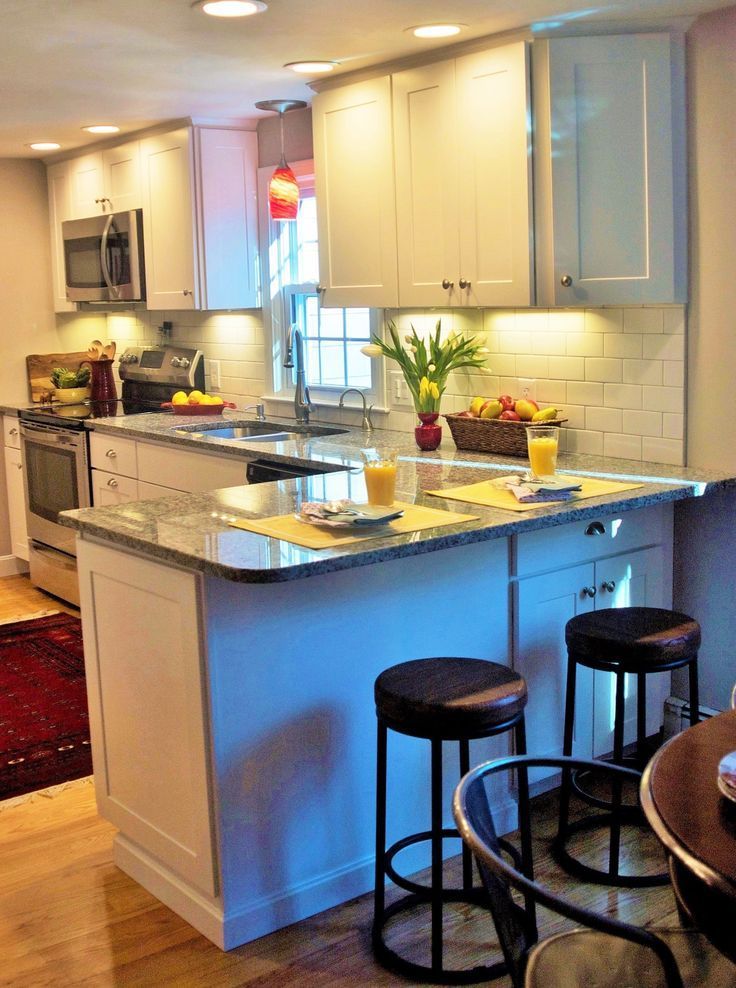 'Lighter wood finishes and paint colours work well to expand the perceived space of your kitchen.'
'Lighter wood finishes and paint colours work well to expand the perceived space of your kitchen.'
'However, whites and creams are less popular at the moment, so a great compromise is a smoky grey scheme, using a smoked oak wood paired with a matte grey paint. Pair these tones with very light coloured countertops, and your kitchen will look spacious and airy.'
32. Add depth with glass
(Image credit: Future PLC)
Whether planning a new kitchen or carrying out a makeover on existing cabinets, glass is a key material to enhance a small kitchen ideas.
'If you do decide on floor-to-ceiling cabinets, these should only be fitted with glass door display cabinets. This will open up the space in a way that opaque cabinetry will not in a smaller kitchen,' explains Tom Howley.
33. Use fresh mint green to promote calm
(Image credit: Dulux)
Kitchens of all sizes can feel chaotic, but by their very nature, small kitchens are particularly vulnerable.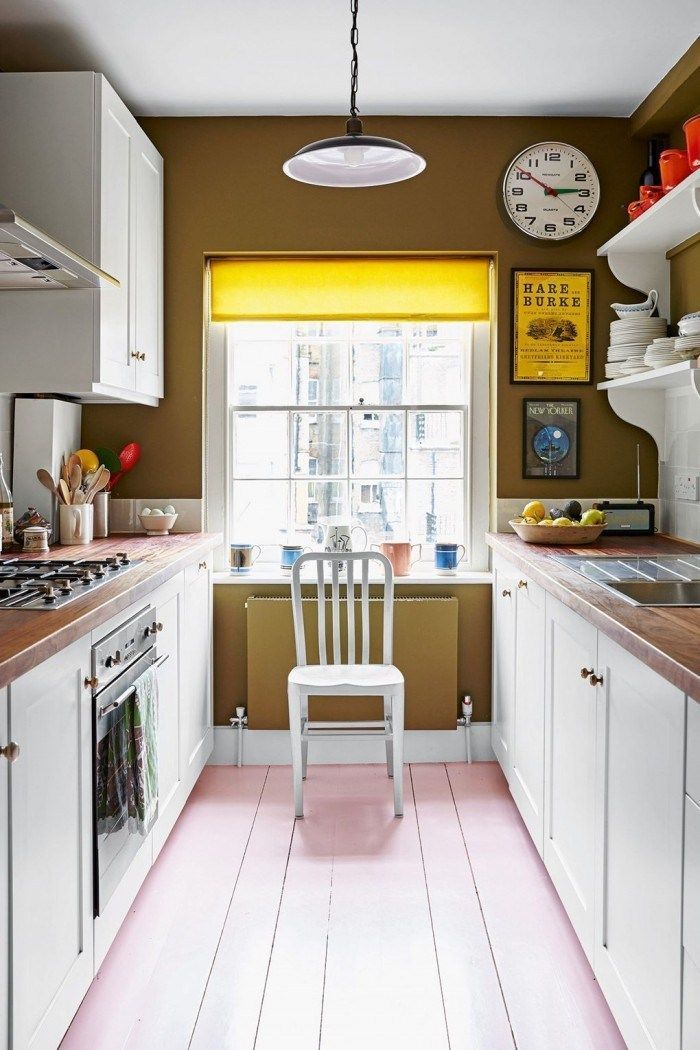 Tackle this head on by painting your small kitchen in a colour that promotes rest and relaxation. Green kitchen ideas are the ultimate choice for making us feel collected and calm.
Tackle this head on by painting your small kitchen in a colour that promotes rest and relaxation. Green kitchen ideas are the ultimate choice for making us feel collected and calm.
Mix in different tones in cabinetry, walls and accessories. That layering will mimic the green of a garden, woodland or forest glade, exaggerating the effect.
34. Refresh walls and cabinets
(Image credit: Dulux)
Painting kitchen cabinets is having a resurgence, as homeowners look for affordable ways to revamp existing kitchens, rather than the expensive task of replacing them. This type of budget kitchen idea is a great way to revive the surfaces and make your space look brand new with a simple splash of colour. In small spaces, a new colour scheme can do wonders to help the space feel that little bit bigger too.
By painting all the base units in a darker shade the room will feel divided, creating the optical illusion of a greater sense of space between floor and ceiling.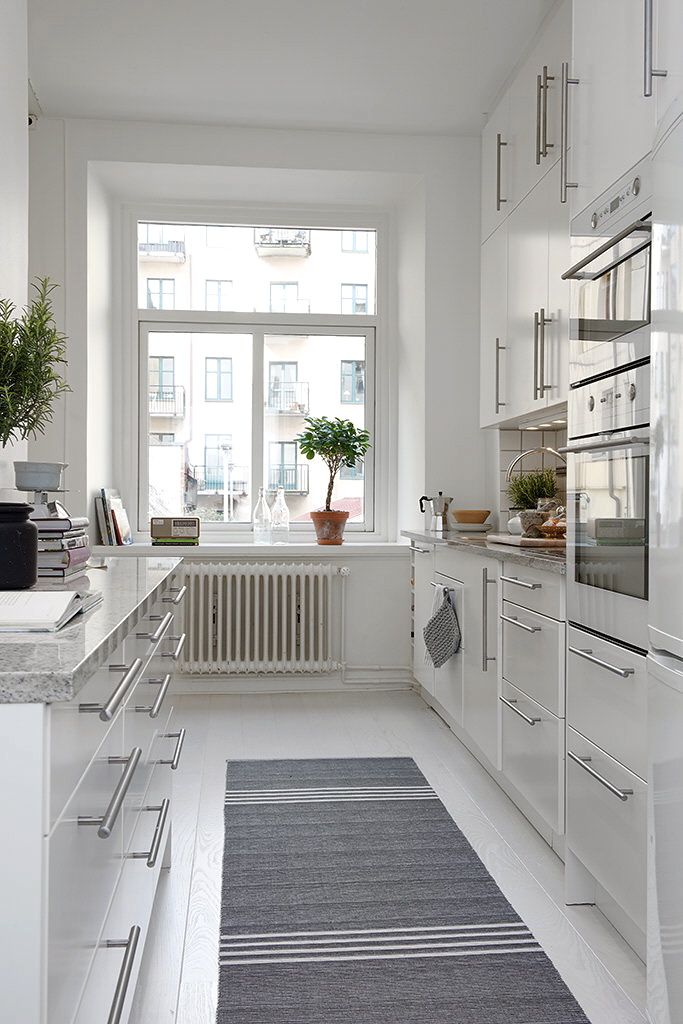
35. Embrace reflective surfaces
(Image credit: Future PLC)
Make a small kitchen feel light and airy by opting for a neutral kitchen colour scheme. However, neutral doesn't just mean beige or cream kitchen ideas. Pair white patterned tiles and marble worktops with duck egg blue kitchen cabinets for a crisp colour scheme that will bounce light around, making the kitchen feel spacious.
36. Invest in flexible storage
(Image credit: String)
Instead of investing in ordinary shelves, look at more modular options. Choose shelving which maximises storage by adapting to your kitchen's needs.
Add in or take away shelves, adjust heights, hang glasses upside down and even introduce a wine rack. When space is at a premium you need to make sure every inch counts. Speaking of which, Simon Temprell, Interior Design Manager at Neptune recommends hanging a 'batterie de cuisine' above an island or countertops to store pans and cooking utensils overhead, and integrating as many appliances as possible so they're unobtrusive.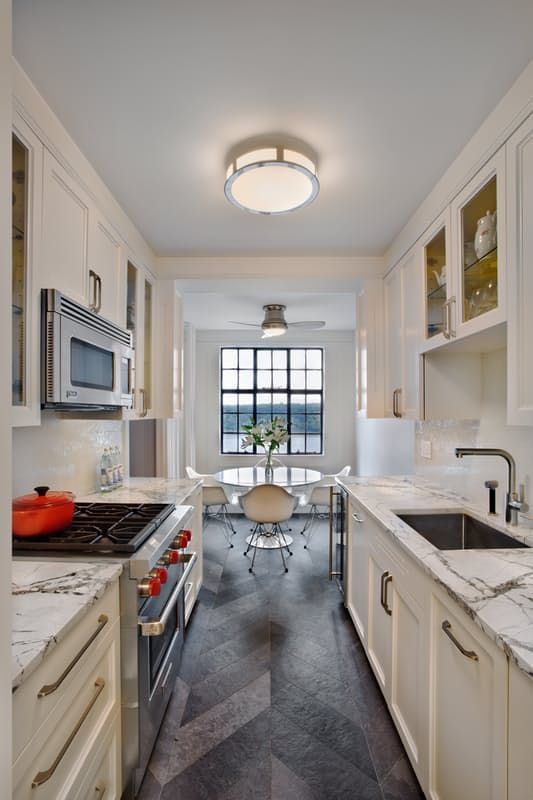
37. Hide appliances in a breakfast nook
(Image credit: Future PLC/Colin Poole)
Keep surfaces from looking cluttered by tucking the toaster, kettle and coffee machine away in a breakfast cupboard. As soon as you open the cupboard your favourite gadget is sat ready to use.
This is a nifty trick for small kitchen design, making use of awkward corners and making sure that none of your kitchen tech gets lost at the back of a cabinet.
38. Choose a combined extractor induction hob
(Image credit: IKEA)
A combined induction extractor hob is a great space saver in small kitchen ideas. It means you can swap a bulky extractor hood above the hob in favour of extra storage.
If you don't require an extra cupboard or set of shelves, consider leaving the area above the hob empty to give the illusion of a more spacious kitchen.
39. Swap a table for a kitchen island
(Image credit: Future PLC/Lizzie Orme)
Adding an island might sound like a terrible idea in a small kitchen.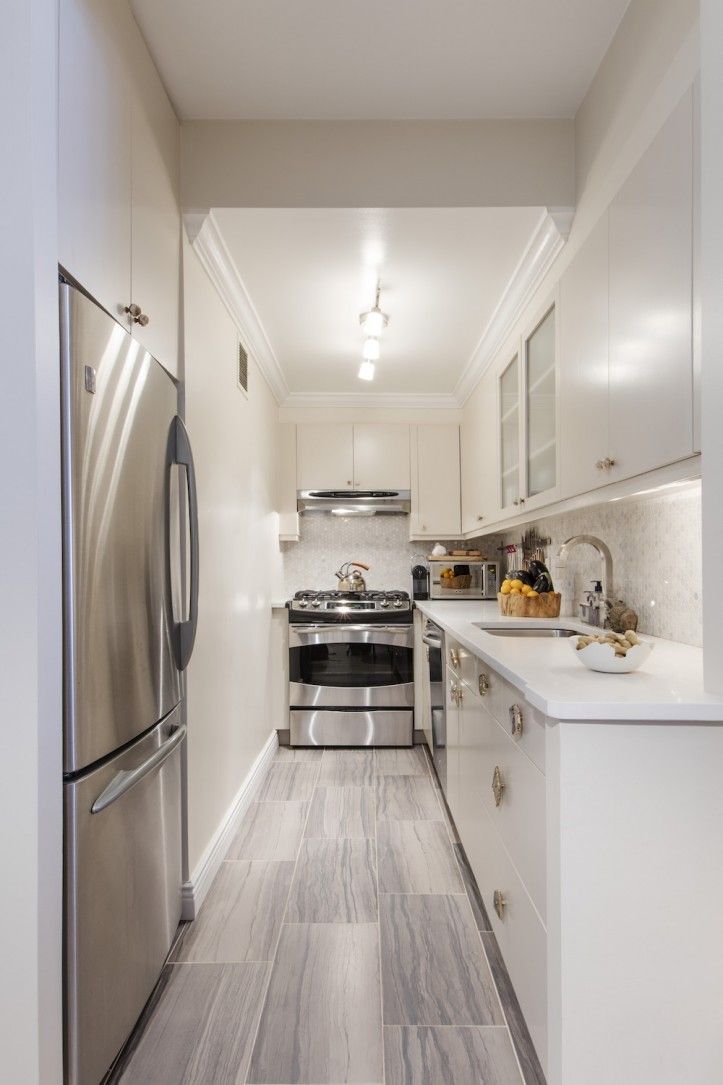 However, in a long thin kitchen, a well-thought-out kitchen island idea can be the perfect way to add in extra storage and surface space, whilst keeping the kitchen a sociable space.
However, in a long thin kitchen, a well-thought-out kitchen island idea can be the perfect way to add in extra storage and surface space, whilst keeping the kitchen a sociable space.
Choose an island with plenty of storage space underneath for stowing away vegetables and linens. A slight overhang from the counter top ensures that the four bar stools fit easily under the island, avoiding any potential trip hazards.
40. Paint cabinetry to match the walls
(Image credit: Future PLC/David Parmiter)
Create the illusion of more space in a small kitchen by painting the cupboards in the same colour as the walls. The ultimate white kitchen idea, it creates a light and airy space where the units blend into the kitchen walls.
Every spare inch of space could be crammed with storage but a uniform wash of white paint will keep the space looking neat and spacious.
41. Invest in pullout drawers for easy access
(Image credit: Future PLC/David Parmiter)
Small kitchen design requires you to make use of every inch of storage space you have. If you have a small boxy kitchen, rather than cramming all your pots and pans into a deep cupboard that is going to become a nightmare when you need to find a particular frying pan, consider swapping a cupboard for a drawer.
If you have a small boxy kitchen, rather than cramming all your pots and pans into a deep cupboard that is going to become a nightmare when you need to find a particular frying pan, consider swapping a cupboard for a drawer.
Choose a clever pullout drawer to maximise space and make finding your favourite frying pan easy-peasy.
42. Rethink the washing machine
(Image credit: Future PLC/Caroline Arber)
You may think the kitchen is the obvious place to put a washing machine. But in continental Europe, you're more likely to find it in a bathroom. So if you're stuck for space, it might be worth relocating your laundry appliances and incorporating them into your bathroom ideas. If your bathroom is just as teeny, you might be able to squeeze it in a cupboard under the stairs.
Alternatively, if you have a separate washer and dryer, you could consider keeping them in the kitchen but stacking them one on top of the other in an old larder cupboard. It hides them out of sight, saves space and helps streamline laundry days.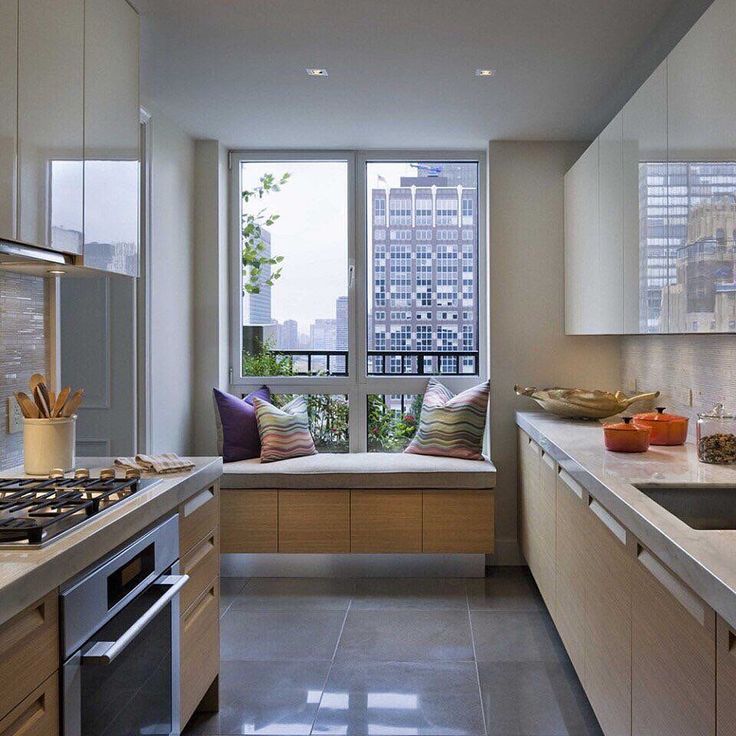
43. Supersize the sink
(Image credit: Future PLC/Georgia Burns)
Investing in the best dishwasher is tempting, but your small kitchen design might not have space for one. So, it's worth finding room for a double sink instead.
Keep one bowl for washing and one bowl for dirty dishes. That way you'll have somewhere to stack mucky prep kit and plates out of sight, and without cluttering up the work surface.
44. Turn every corner into a storage space
(Image credit: Future PLC/David Parmiter)
If you don't have the budget for a kitchen extension, optimise the space you already have instead. Identify places where there’s wasted space, such as the gaps between shelves, at the back of cupboards, below the sink, unused corners and windowsills. Stack wherever you can and have a clear out of kitchenware that’s infrequently used or only has one purpose, so you have less to store.
Think also about relocating items that aren’t in everyday use, but you don’t want to throw out, to elsewhere in your home.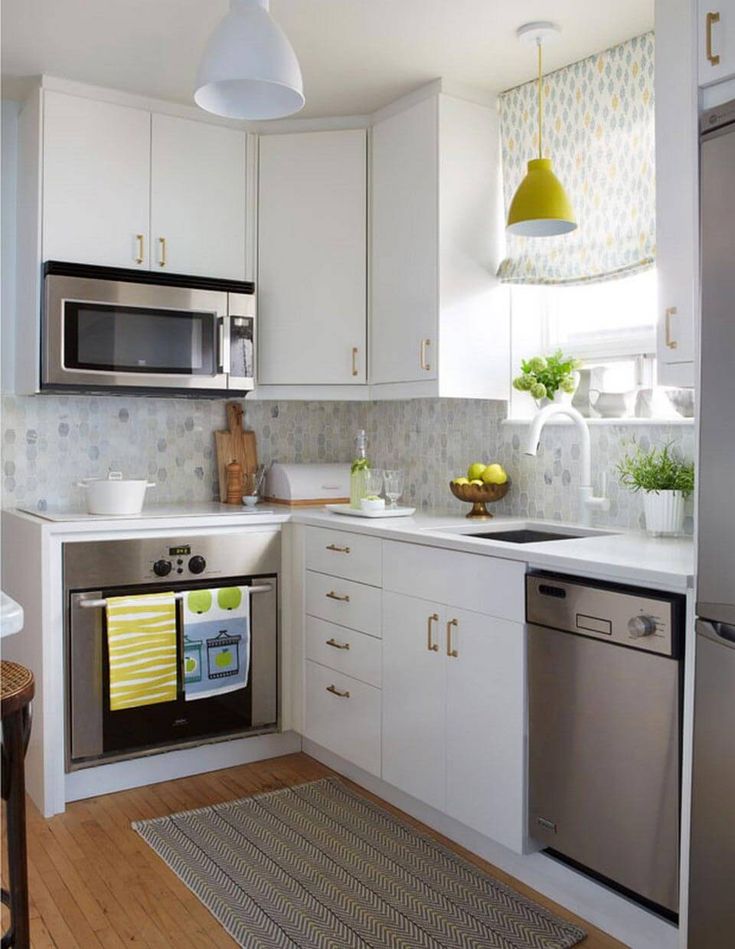 Next, think about the space on your walls and doors. Try adding a utensil rail or magnetic knife board, hooks on the sides of your cupboards or racks hung over a door. Extra shelves in corners or across alcoves will also come in handy.
Next, think about the space on your walls and doors. Try adding a utensil rail or magnetic knife board, hooks on the sides of your cupboards or racks hung over a door. Extra shelves in corners or across alcoves will also come in handy.
45. Add a kitchen trolley
(Image credit: Future PLC/Dan Duchars)
Your cupboards and drawers are your biggest storage resource but it’s likely that they’re not being used fully in your small kitchen ideas. Internal storage solutions will make the most of them, so think about retrofitting wire racks that pull out of corners or slim cupboards, some plinth drawers, or using drawer dividers for utensils, spices, pans or plates.
You can boost your storage further with a mobile solution, such as a trolley or butcher’s block on castors, or think about popping baskets or containers on top of your wall cupboards. Just keep a sturdy stool nearby so you can reach them.
46. Keep on top of clutter
(Image credit: Future PLC/David Brittain)
Wall cabinets can really encroach on space, so consider doing away with yours.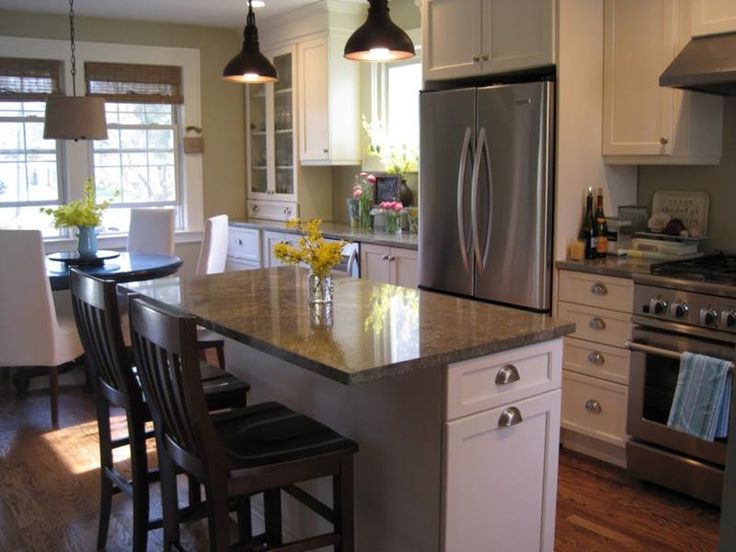 Open kitchen shelving ideas can have a huge impact in a small kitchen, creating an open and airy feel. Just ensure you limit the amount of shelves you use, and what you keep on them.
Open kitchen shelving ideas can have a huge impact in a small kitchen, creating an open and airy feel. Just ensure you limit the amount of shelves you use, and what you keep on them.
47. Marie Kondo your worktops
(Image credit: Future PLC/Lizzie Orme)
Marie Kondo advises against having anything left out on your worktops, and while that may be a little extreme, too many items cluttering up the worktops can be a real headache. Consider clever solutions like wall-mounted magnetic knife strips, rails to hang utensils, pans, mugs, spice jars, and cutlery bins.
Also think about what you need to have to hand every day, such as chopping boards, wooden spoons, washing-up liquid, and what can be stored away until needed. Look for genius kitchen appliance layout ideas to save even more space.
48. Incorporate a slim island
(Image credit: Future PLC/Colin Poole)
Not every kitchen will have room, but if your heart is set on having a small kitchen island or peninsula, consider a slimline design with a petite footprint so it can fit comfortably in a small kitchen.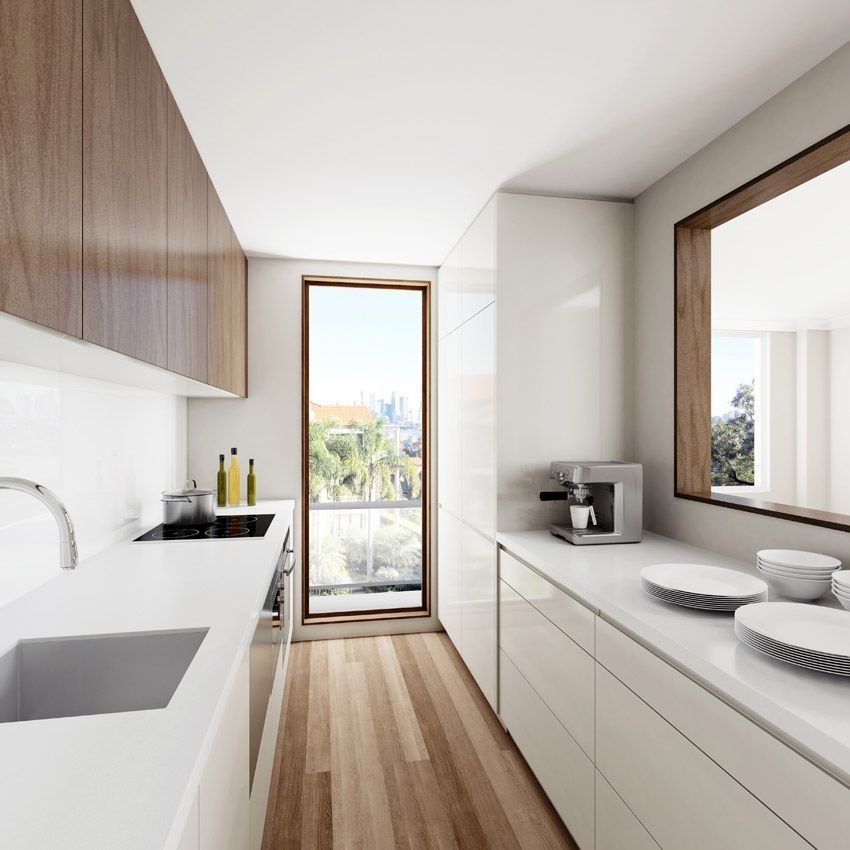 The central workstation may be small, but it can still provide extra storage space and a useful worktop for food preparation.
The central workstation may be small, but it can still provide extra storage space and a useful worktop for food preparation.
49. Choose handless cupboards
(Image credit: Future PLC/Lizzie Orme)
Opt for handleless designs for a sleek, streamlined appearance. This will maximise the visible space and make your small kitchen ideas feel less cluttered. Boost this effect by keeping to the same materials and colourways.
How do I plan a small kitchen?
As with any kitchen, large or small, you need to think about the journey. How do you use the space? There's a triangle of use within every kitchen, the journey made from fridge to sink to oven – the key elements that need to be considered. Plan your layout around the best way to use the floorspace. Look to use vertical solutions to make the most of every storage space available.
'With small kitchen design, considering appliances would be my starting point,' says Sally Hinks, Kitchen Designer, Harvey Jones.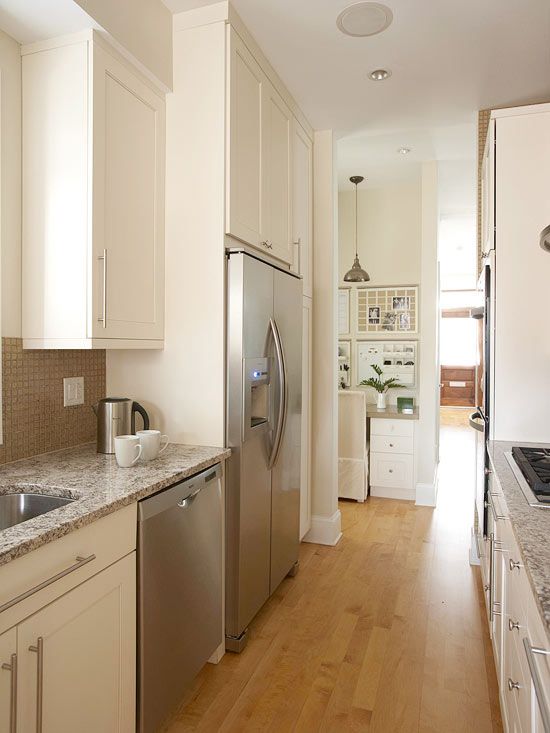 'Any large appliances such as washer/dryers that can multitask are worth considering. Integrating appliances wherever possible will also help open up a space visually and create clean lines. Housing small appliances also makes a difference – boiling taps and integrated microwaves and coffee machines free up valuable space and keep surfaces clear from bulky microwaves and kettles, to create the illusion of more space and a more minimal aesthetic.'
'Any large appliances such as washer/dryers that can multitask are worth considering. Integrating appliances wherever possible will also help open up a space visually and create clean lines. Housing small appliances also makes a difference – boiling taps and integrated microwaves and coffee machines free up valuable space and keep surfaces clear from bulky microwaves and kettles, to create the illusion of more space and a more minimal aesthetic.'
'Lighting is one of the biggest elements of the room’s design which is often overlooked at the early stages,' adds Daniel Bowler, Director, Eggersmann UK . 'This can actually make a big difference to how spacious small kitchen ideas feel when finished and should really be incorporated into the initial layout so that electrical planning can take place early on.'
What is the best layout for a small kitchen?
'When it comes to choosing the right layout for small kitchen ideas, the most important consideration is for the space to be easy to navigate,' advises Matt Baker, Kitchen Designer, Harvey Jones.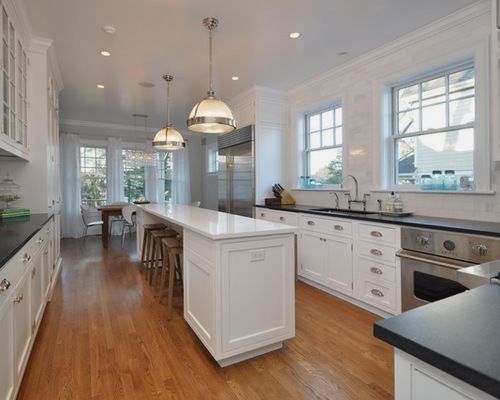 You should ask yourself what is the kitchen triangle design rule, and how to make it work in your space. 'There should be a good-sized space of worktop run for preparation, preferably next to or opposite the hob zone. Thinking about how you will use the space is really important. For example, opting for an L-shaped layout gives the room an open, more inclusive feel, so it’s easier for family and guests to interact. '
You should ask yourself what is the kitchen triangle design rule, and how to make it work in your space. 'There should be a good-sized space of worktop run for preparation, preferably next to or opposite the hob zone. Thinking about how you will use the space is really important. For example, opting for an L-shaped layout gives the room an open, more inclusive feel, so it’s easier for family and guests to interact. '
'Other popular layouts for small kitchens include U-shaped and galley styles,' continues Matt. 'U-shaped layouts are a great solution to maximise storage and work surface areas, creating a remarkably efficient cooking space. '
'Galley kitchens offer a simple and practical option for small kitchens,' adds Matt. 'The great thing about them is that everything is within reach, however, they aren’t really designed for more than one person!'
Ben Burbidge, at Kitchen Makers says small kitchens needn't compromise on dream layouts. 'Don’t be afraid to include a breakfast bar but try not to make the overall dimensions too big, as it may restrict movement around the kitchen. The area under the breakfast bar can offer ample space for storage and kitchen.'
The area under the breakfast bar can offer ample space for storage and kitchen.'
'Islands are best to be avoided in small kitchen design as they are more space-hungry than people think,' adds Graeme from Second Nature Kitchens. 'You need circulation space around the Island – to ensure you get the best movability and functionality. You could opt for a peninsular to get a similar feel if your kitchen was too small for an island but slightly bigger to accommodate more than galley.'
How can I make the most of my small kitchen?
Make every centimetre count by carefully planning your layout and making sure you regularly clear out kitchen paraphernalia you're not using.
Simon Temprell at Neptune says it's important to incorporate articulated shelving in corner cabinetry to get the most out of your ‘dead’ space and to use a pantry cabinet to get maximum versatility for your storage solutions. If you can afford to, he suggests installing a Quooker tap, as this will free up kettle counter space.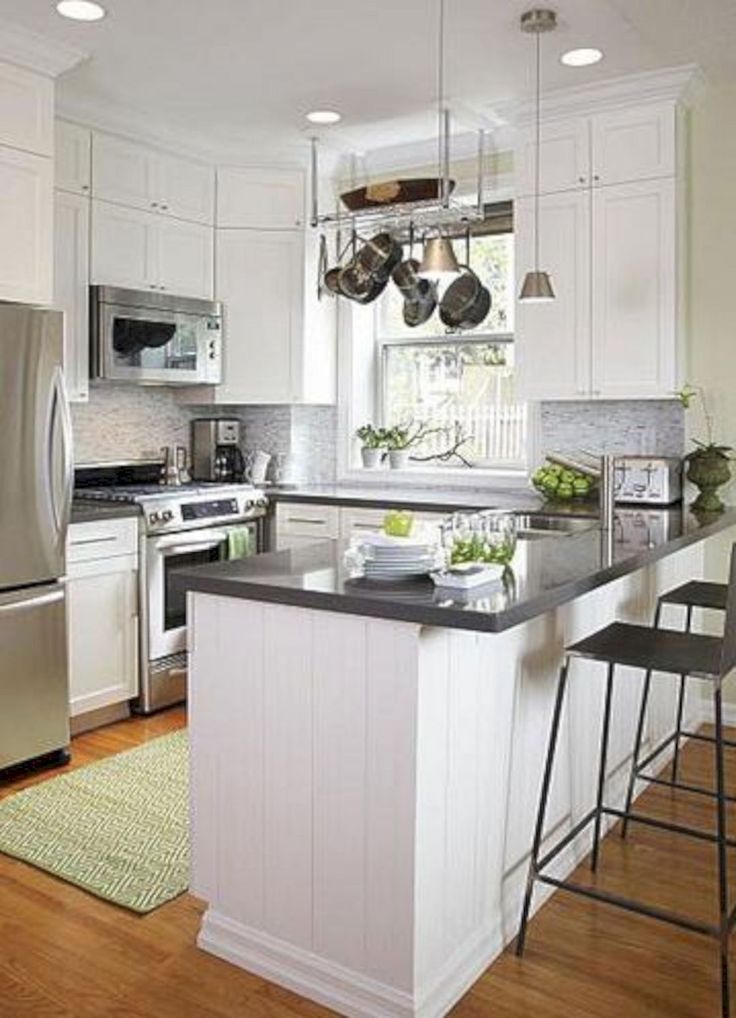
Tori Summer, Director of Design and Innovation at Howdens points out that recycling and waste bins are commonly overlooked pieces of kitchen furniture in small kitchens. 'By thinking about these items from the very inception of your design it means that there will be fewer objects taking up valuable floor space, but it also means that recycling is sorted quicker, and any unwanted smells are kept at bay too.'
What is the best colour for a small kitchen?
Light is the greatest tool to help a small space feel bigger, brightening the space by bouncing light into shadows and lifting the entire room. Therefore white is a great option. A staple for small spaces, pure brilliant white is devoid of all pigment. This means it reflects back nearly all light that hits it. Conversely, the darker the colour, the more light it absorbs.
'Whether it’s a matt or gloss finish, lighter shades like Porcelain and Dove Grey are your best options when designing a compact kitchen space,' advises Simon Bodsworth, Managing Director of Daval Furniture .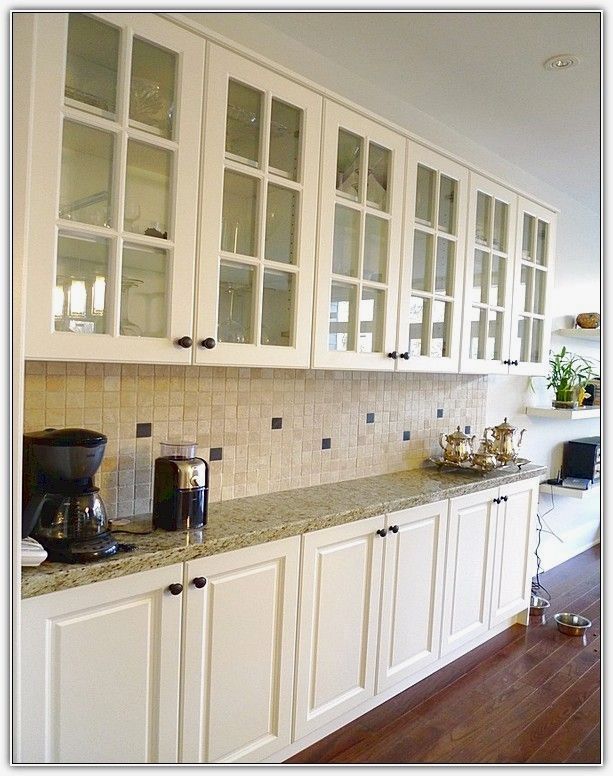 Providing high reflection and fluidity of design, this choice of colour will keep the area bright and create the illusion that the space is larger than it really is.'
Providing high reflection and fluidity of design, this choice of colour will keep the area bright and create the illusion that the space is larger than it really is.'
Help your chosen colour go even further in a small kitchen by painting the cupboards in the same colour as the walls. An allover colour scheme helps to keep the look light and airy by seamlessly blending the cabinets into the kitchen walls.
All that said, you can go bold with dark shades. 'Much to contrary belief, bold colours can work especially well in smaller kitchen ideas,' points out Al from Olive & Barr. 'Navy, cobalt, or royal blue add impact and a wow-factor and work especially well when used liberally throughout the cabinetry. Maintain balance with a quartz countertop to keep the room feeling light and airy.'
'Those looking for a classic scheme that lends itself to an understated look, a neutral palette of white, ivory, and grey work to add a sense of modern simplicity to a kitchen.'
60+ photo examples, solutions for the most complex layouts
Kitchens in typical houses often have a disproportionate configuration.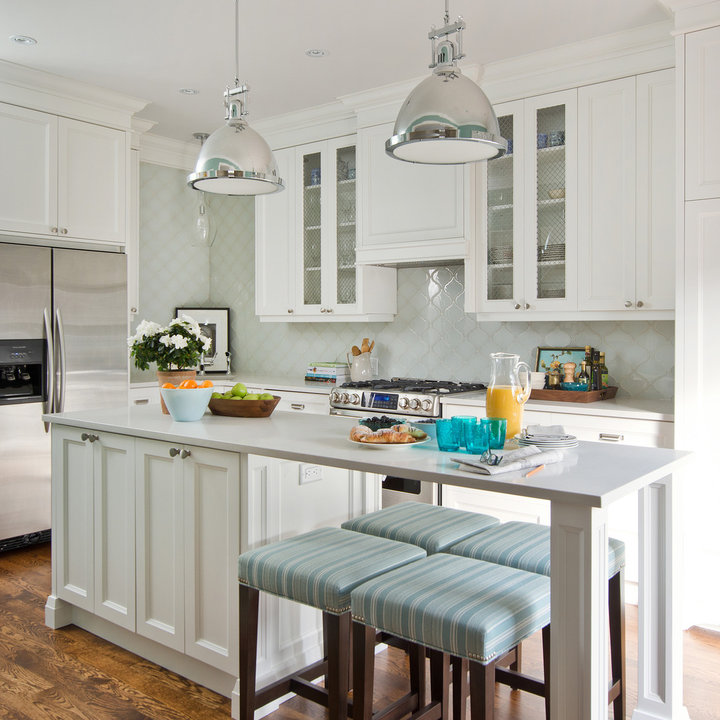 Under these conditions, the owner of the apartment will have to try to plan a convenient and functional design of the kitchen space - so that the set fits in and there is a place to gather the family in the evening. However, in narrow kitchens you can equip a comfortable environment.
Under these conditions, the owner of the apartment will have to try to plan a convenient and functional design of the kitchen space - so that the set fits in and there is a place to gather the family in the evening. However, in narrow kitchens you can equip a comfortable environment.
Contents
Design features of a narrow kitchen
To prevent a long kitchen from looking too gloomy, it is worth giving preference to wallpaper in pastel colors. It will look good white in a milky shade, as well as peach and cream tones.
Cream kitchen is a wonderful choice for a small kitchen.If the kitchen is very long, a bright picture can be placed on one wall as an accent, which will visually divide the room.
Furniture in a narrow kitchen will also look better with light fronts. However, this is not an axiom. The combined version will also look great, when the lower cabinets are made in deep bright light, and the facades of the upper ones are lighter.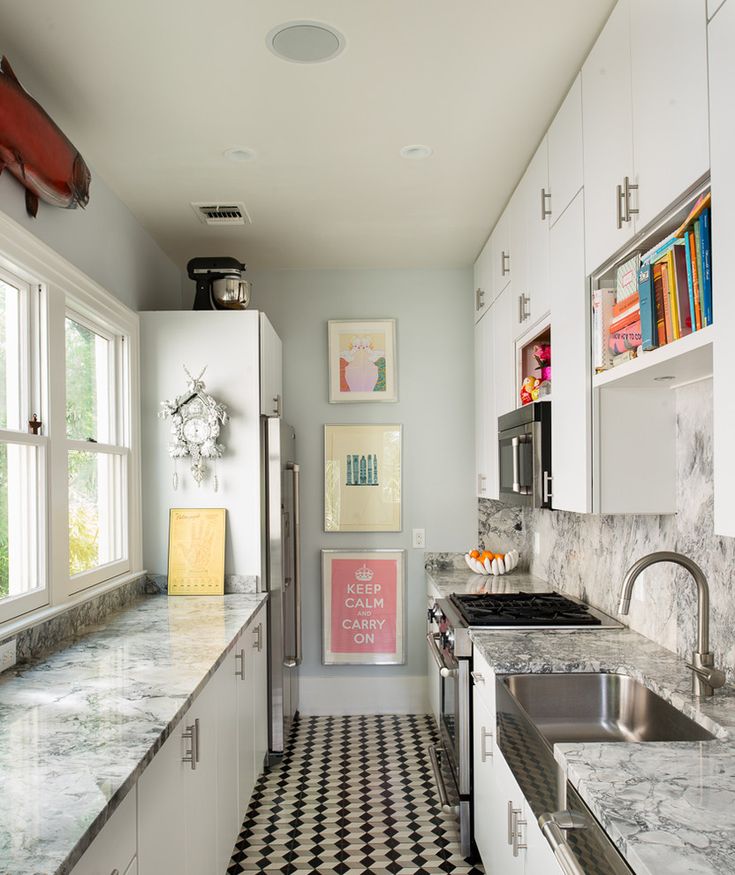
An important role is given to the choice of flooring. The main task of finishing the kitchen is the visual expansion of the room. If you decide to use floor tiles, you can lay them diagonally.
If laminate is used, lay it perpendicular to the longest wall. The dark color of the floor will add a little depth and height to the room, and the light color will brighten the perception of the long kitchen tunnel.
The floor covering makes a big difference in the limited space.For the ceiling, the best choice is stretch ceilings. The lower they are, the lighter the shade should be.
For example, with low ceilings, glossy PVC stretch ceilings will look good and visually enlarge the room due to the reflective surface. High ceilings can be decorated with canvases with stained glass or linear patterns.
The light ceiling does not distract attention and gives the kitchen extra volume.Which layout to choose for a narrow kitchen
There are several layout solutions for narrow kitchens.
Linear layout
The saddest option is a very narrow kitchen. In such it is impossible even to combine the dining area with a suite stretched along one wall. The refrigerator is placed in one row with the headset, usually near the entrance.
Such a kitchen is also inconvenient because the hostess has to wind extra meters while cooking, constantly moving between the refrigerator, sink, stove and work table.
Placing a headset along one wall is the most obvious solution, but not ergonomic.Such kitchens are so narrow that in order to create a comfortable environment it is necessary to move the dining area into a nearby room. The only alternative is a narrow transformer table or a tabletop folding from the wall like a bar counter.
Several tricks will help brighten up the tunnel syndrome:
- place a TV on the wall above the entrance;
- stick a photo wallpaper with a kitchen theme on the opposite wall from the set;
- Use wallpaper with vertical stripes or vertical patterns to shorten the room a bit.
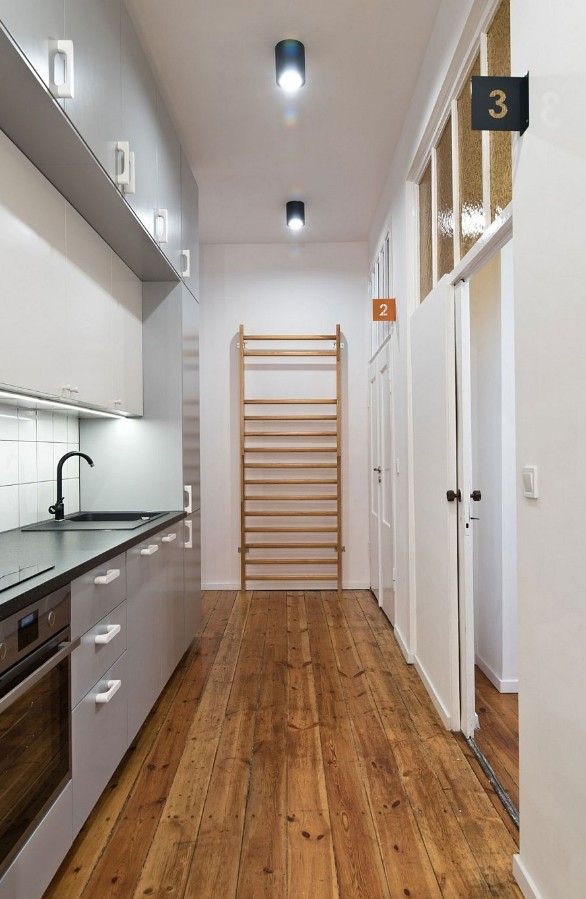
Parallel layout
This can be called a kitchen in which a kitchen set will fit on both sides or there is a place to place a dining area opposite the furniture.
In such a room, it is already possible to more conveniently arrange the working area - move the stove with a refrigerator in front of the sink. The main thing is that the width of the passage should not be less than 90 cm.
You can visually expand the room by replacing the upper drawers with open shelves. You can, on the contrary, build up the kitchen up, solving the problem of storage at the same time.
Rarely used household appliances or crockery can be stored in an additional row of drawers under the ceiling. So that the boxes do not hang over your head, it is better to order a set with light wall cabinets.
Light furniture will not "crush" in an already very limited space.
U-kitchen
You can arrange the furniture set with the letter U in kitchens that are closer to the square. In this case, the window sill is removed and a working area with a sink is installed in its place.
A lack of planning can easily be turned into an advantage by moving the washbasin.For the hostess, this option is the most convenient in terms of cooking and storage. But to create a eating area, you will have to use again either a narrow table along the wall or a transforming table.
However, planning problems can be solved by placing a dining area near the window and placing a corner sofa there. At the same time, work surfaces should end in front of the dining area.
The seat at the foot of the window is the perfect dining area in a small kitchen.D-kitchen
This is another planning option that is acceptable in cases where the door to the kitchen from the corridor is not installed in the center of the wall, but asymmetrically.
There are 2 options for furniture placement:
- The set forms a corner near the entrance, and a dining table is placed near the window.
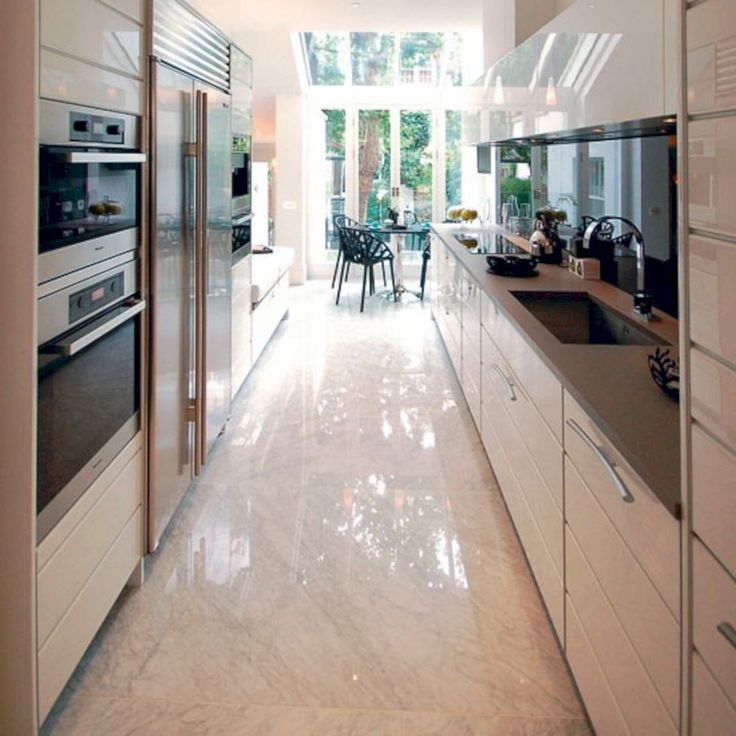
- The set forms a corner near the window (the window sill is removed and a work area is put in its place). A narrow dining table is placed near the free wall.
In conclusion, some general tips for planning a narrow kitchen:
- Move the eating area to a separate dining area. In order not to interfere with the doors when serving dishes, replace them with sliding ones.
- A bar along the wall will help solve the problem of daily lunches and breakfasts. Guests will be received in the living room.
- Corner sofa and stools take up less space than a table with chairs.
- If cabinets cover part of the doorway, just narrow it by 25-30cm. This will solve the problem and there will be no need to puzzle over planning decisions.
- Buy narrower kitchen units - they will widen the aisle and leave room for a table.
- Provide additional lighting - it is unlikely that one ceiling lamp can provide the required level of illumination.
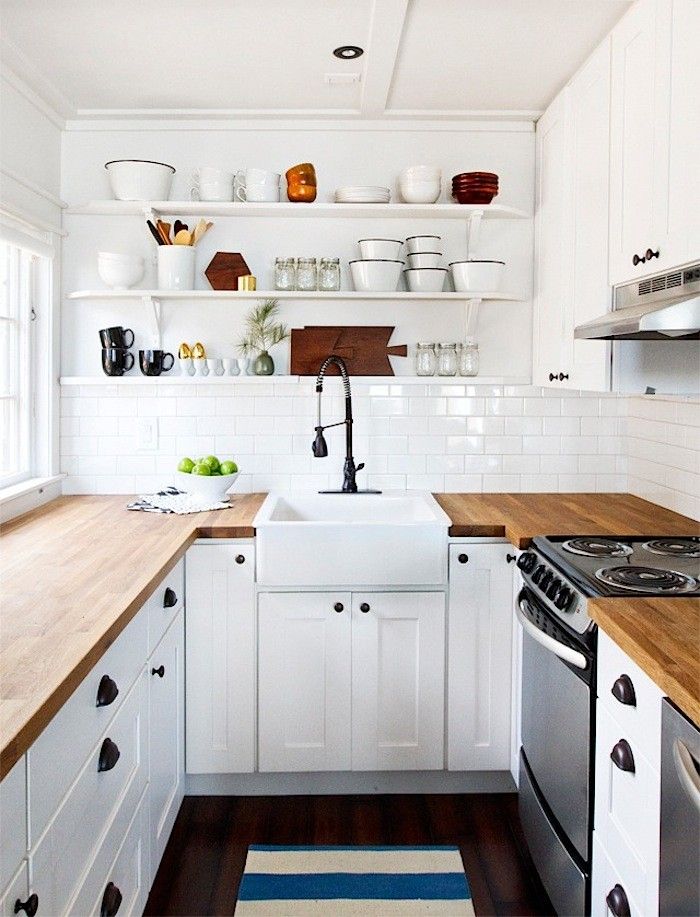 You can stretch 2 rows of spotlights along the ceiling or separately illuminate the work area with lamps located at the bottom of wall cabinets.
You can stretch 2 rows of spotlights along the ceiling or separately illuminate the work area with lamps located at the bottom of wall cabinets.
Narrow kitchen with window
The window in the narrow kitchen is the only source of natural light, so it needs to be groomed and cherished. Curtains should be short and translucent, blinds should be light. Since the window seat is functionally important, it does not need to be littered with curtains.
Roller blinds, Roman blinds and blinds save space near the window, especially in the working area.Near the window in the narrow kitchen, you can install a dining table with a kitchen sofa. You can zone the site with the help of lighting - put a couple of rows of spotlights along the ceiling along the working areas, and hang a long beautiful chandelier above the dining area.
If the dining area is taken out into the dining room or placed along the wall, you can use this place more functionally. If you install a desktop near the window and combine the countertop and window sill under a common countertop-window sill made of artificial stone, such an area can look really luxurious.
If you install a desktop near the window and combine the countertop and window sill under a common countertop-window sill made of artificial stone, such an area can look really luxurious.
A bold option is to move the sink to the window. Of course, it will be necessary to provide for the redevelopment of the water supply system. As for the radiator, you can make a cabinet for it with holes in the doors. The efficiency of the radiator, of course, will decrease in this case.
If the kitchen faces north or is located on a windy top floor, you can move the radiator to an open wall. To prevent the faucet from interfering with opening the sash, install a bayonet faucet model that can be removed and laid on its side.
Tastefully selected set, lighting and accessories will make even the most inconvenient narrow kitchen cozy and chic.Narrow kitchen with a sofa
A narrow cozy sofa will increase the number of seats at a narrow table and take up little space.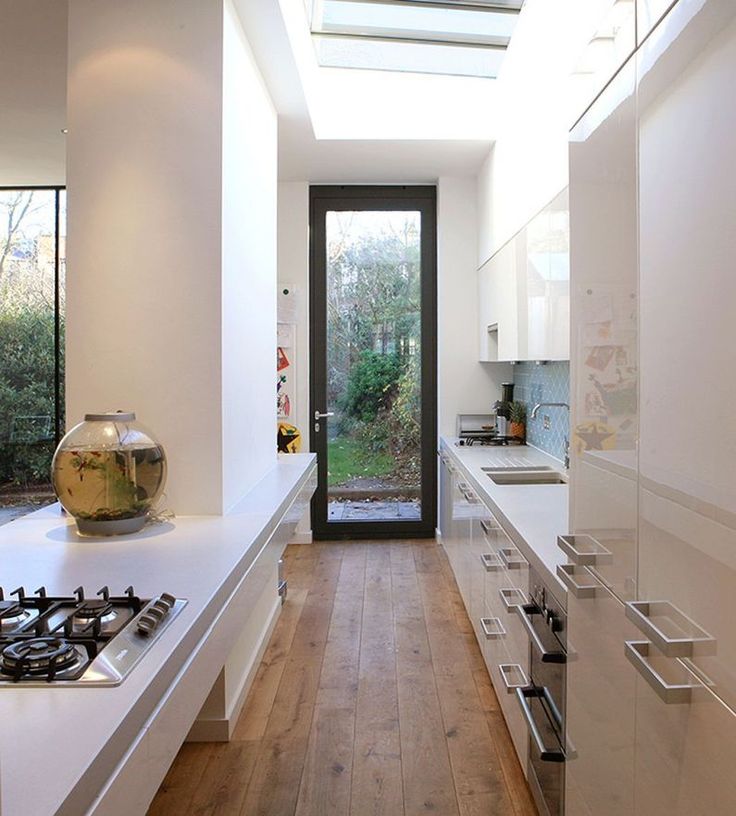 This is a great alternative to a table with interfering chairs.
This is a great alternative to a table with interfering chairs.
You can place the sofa along the window, creating a separate dining area. To fit into the style ensemble, the upholstery must match the color scheme of the table.
Light range - the most suitable for furniture in a narrow room.Narrow kitchen with a balcony
The balcony in the kitchen is a real planning find. In the kitchen with a balcony, a full-fledged place for the dining area appears. First, you will have to perform work on combining the balcony with the kitchen: remove the balcony door with a window, insulate and glaze the balcony, and conduct wiring there.
Panoramic glazing will allow you to admire the city landscapes while eating. The remaining wall can be used as a table for serving dishes and dirty dishes, or you can remove it by moving the radiator to a free wall. Then in the vacant place you can put a bar counter.
If there is a balcony next to the kitchen, then it can take on part of the load of furniture and appliances.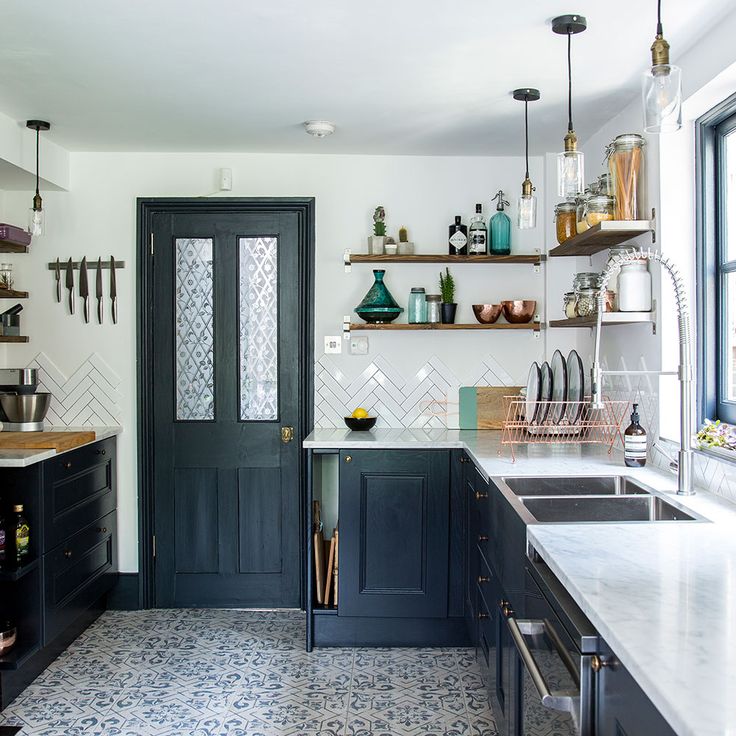
Balcony-dining room - the best option for using additional space that does not require additional refurbishment. If the balcony is narrow, in any case, it will help expand the space for the dining area.
If a spacious loggia is adjacent to the kitchen, then you can equip a full-fledged dining room there. In this case, 2 zones can be separated by an arch or transparent sliding doors.
Please note that any redevelopment work requires a permit. Especially it is necessary if you assume that someday you will sell an apartment.
Attaching a balcony and placing a dining group on it is the most logical solution for a narrow kitchen.Narrow kitchen-living room
If you are lucky enough to become owners of a narrow kitchen-living room, you will have to reconsider the principles of furniture placement. All furniture should not be placed parallel to a long wall, because in this way the room will stretch even more.
A long set and a longitudinal arrangement of the floor boards are the two main mistakes in the arrangement of a narrow kitchen.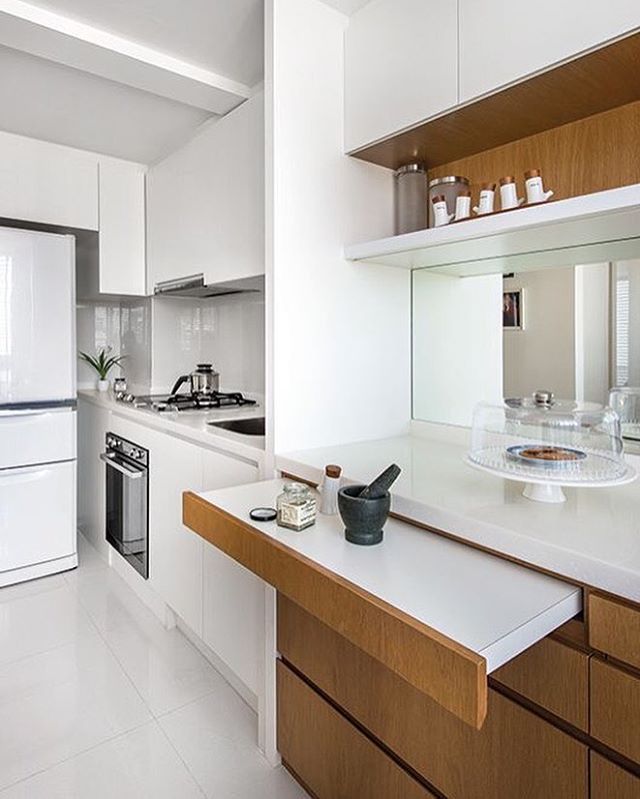 It is advisable to zone the room with furniture.
It is advisable to zone the room with furniture. You can consider the option of a kitchen with an island. The island can be used as a work surface, or you can install a hob on it.
The essence of this arrangement is the installation of large objects across the room: sofas, an island. A narrow room will seem more proportional.
It is possible to divide the room into 2 zones: make a kitchen at a distance closer to the window, and arrange a living room closer to the entrance, or vice versa, dividing 2 zones with a bar counter.
Sofa by the window - a romantic variety in the interior of the kitchen.Small narrow kitchen
Small narrow kitchen is the most complex layout option.
First, you need to try a cardinal option:
- organize a dining room in the next room;
- demolish the partition with the next room and make a combined kitchen/dining room;
- move the partition deeper into the next room, expanding the kitchen and reducing the room;
- if there is a balcony, combine the room with a balcony;
- expand the kitchen with a corridor.
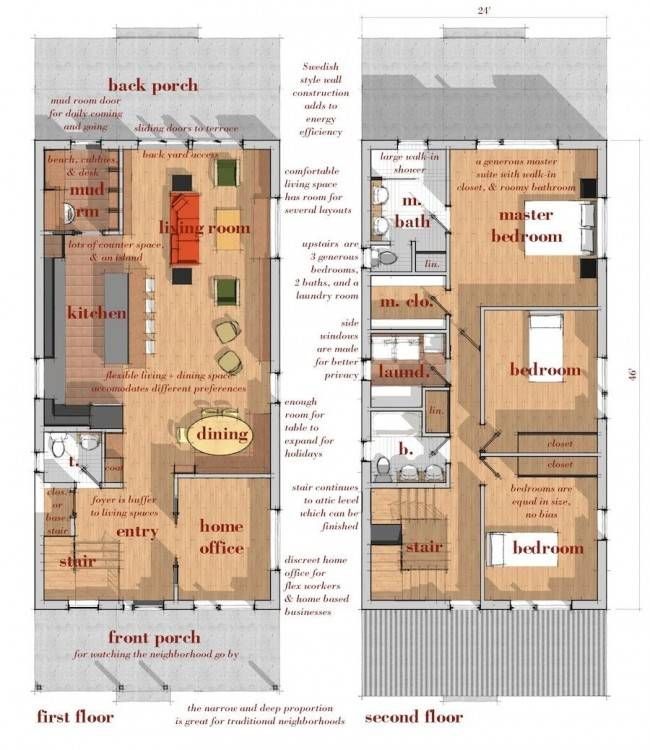
If all this cannot be realized, you will have to get out with the arrangement of furniture:
- buy a narrow kitchen set, and arrange a narrow reclining table from the wall for eating. Folding chairs will also help save space;
- to increase the storage area, place the top tier of cabinets under the ceiling. Use the lower cabinets to install built-in household appliances - dishwasher,
- oven, refrigerator;
- efficient use of a window sill to create a table;
- replace the standard 4 burner stove with a narrower 2 burner stove.
A narrow kitchen does not tolerate clutter, perfect order must reign in it. It must necessarily contain decorative elements: bright utensils, flowers in pots, a picture or a panel on a free wall - all these accents will not only attract the eye, but also distract the attention of guests from the disproportion of the room.
Narrow kitchen real photos
78 interior photos, renovation ideas
In standard city apartments, the area of the kitchen does not always meet the wishes of the owners. Residents of high-rise buildings often face the problem of cramped space, but in the cooking area it is felt most acutely. You can improve the situation with the help of special design techniques that allow you to make a narrow kitchen as comfortable and beautiful as possible.
Narrow kitchen features
A room that is twice as long or more than wide, more like a corridor than a living space. This is especially true for the “window opposite the door” options. The only exception is open areas in studios, but completely different design laws apply to them.
The area of a narrow kitchen can be different - somewhere a miniature set will hardly fit, in others there will be enough square meters for a full-fledged dining table.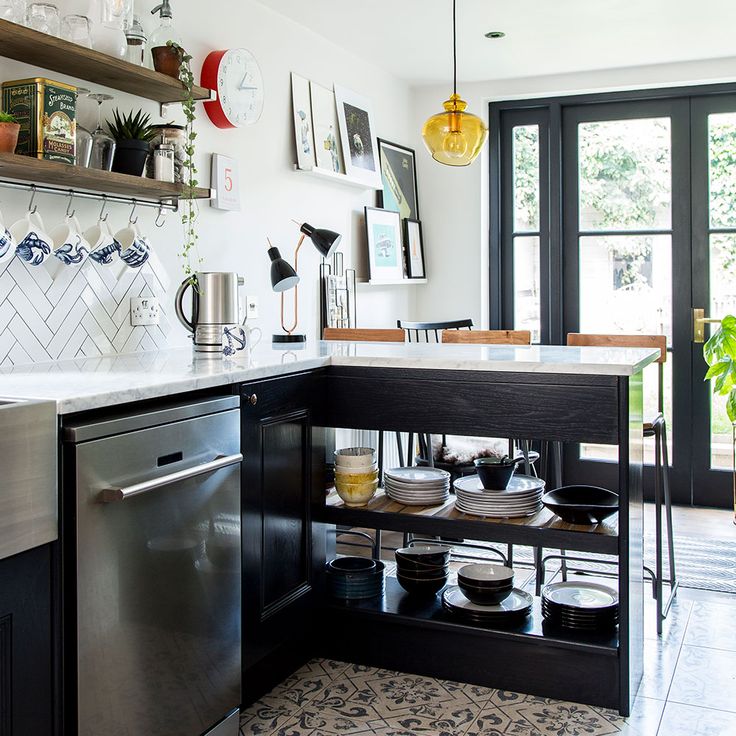 Sometimes the space can be slightly expanded by combining it with a living room or a balcony, but in most cases you have to put up with what you have. To be comfortable in a narrow kitchen, it is very important to properly equip it.
Sometimes the space can be slightly expanded by combining it with a living room or a balcony, but in most cases you have to put up with what you have. To be comfortable in a narrow kitchen, it is very important to properly equip it.
An elongated room sets a list of requirements for a design project. Firstly, it is necessary to balance the proportions, visually push the walls and raise the ceiling; secondly, it should be easy to cook in such a kitchen, that is, attention should be paid to the ergonomics of the processes; thirdly, the aesthetic side is of great importance. Only an integrated approach can satisfy all these criteria, when every little thing is thought out in advance, and the choice of finishes, furniture and appliances is carried out according to a pre-approved plan.
Interior styles
Considering the specifics of a corridor-type kitchen, not so many style solutions are suitable for its design. The smaller the dimensions of the room, the more modest the interior should look.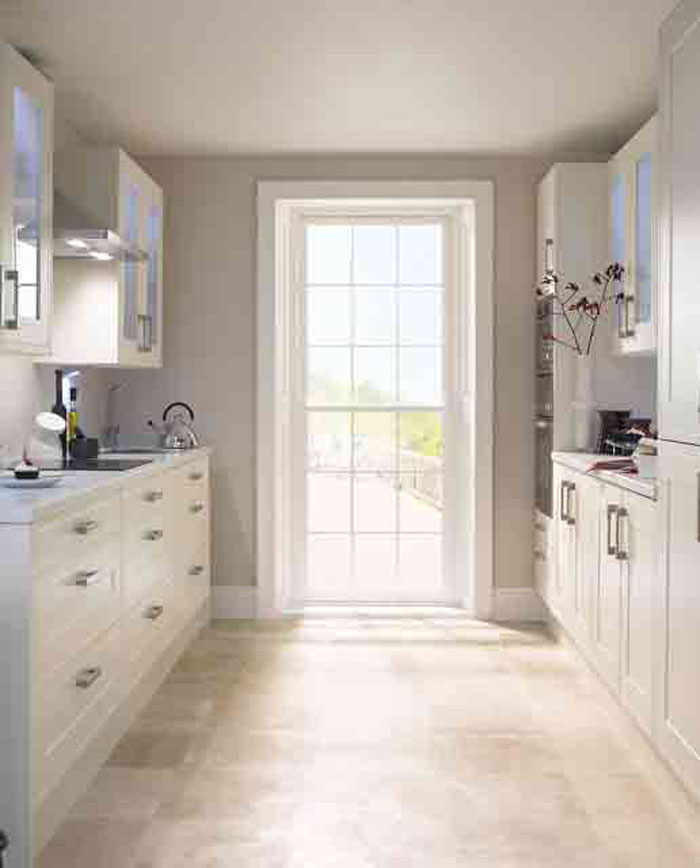 A restrained color palette, smooth textures, a minimum of protrusions and all kinds of decor are the key to a space that is not overloaded with details, in which all family members will enjoy spending time.
A restrained color palette, smooth textures, a minimum of protrusions and all kinds of decor are the key to a space that is not overloaded with details, in which all family members will enjoy spending time.
Modern style narrow kitchen
Reflects the fast pace of life and the high development of technology in the 21st century. In such an interior, everything is clear and concise: kitchen utensils and products are hidden behind neat facades of the headset, built-in appliances flawlessly and quietly perform their functions, and all surfaces without exception remain perfectly clean. The minimalistic design in light achromatic colors is the best choice for a narrow kitchen of the most compact dimensions, thanks to which the cooking process will become easy and enjoyable.
Scandinavian style narrow kitchen
It was borrowed from the traditional home environment of the inhabitants of the Nordic countries - Sweden, Denmark and Norway. Due to the abundance of white and gray-blue colors, it leaves the impression of a boundless expanse of snow-capped mountains, and interspersed with natural wood and ethnic motifs create a warm homely atmosphere.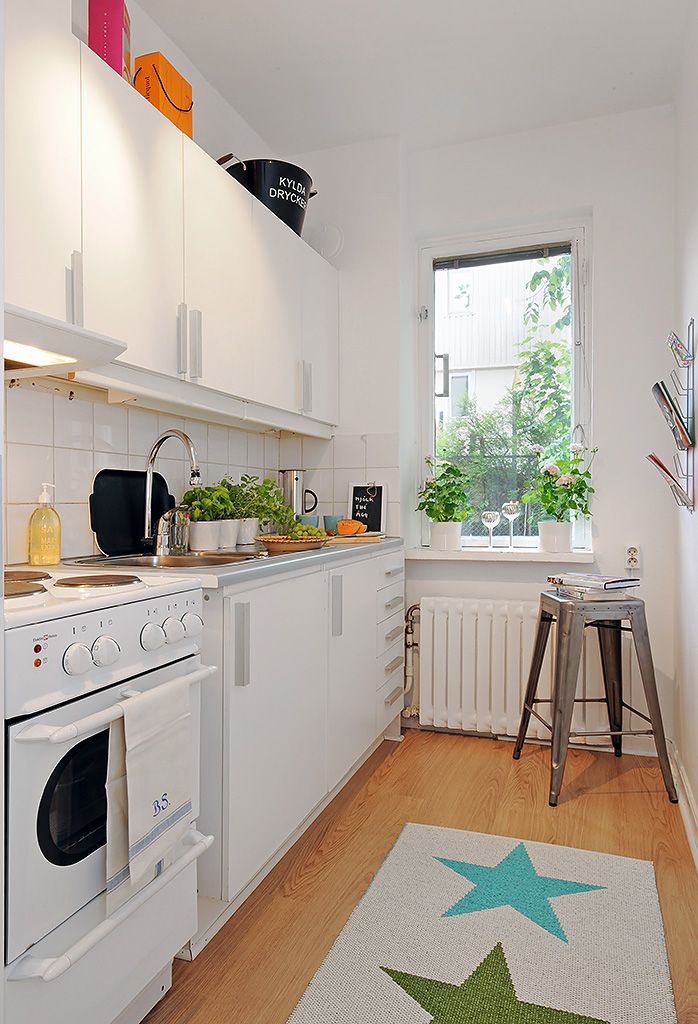 The narrow kitchen, decorated in a Scandinavian style, looks airy and bright, so being in it is a real pleasure for any hostess.
The narrow kitchen, decorated in a Scandinavian style, looks airy and bright, so being in it is a real pleasure for any hostess.
Loft style narrow kitchen
One of the most organic solutions for an extended room. Industrial features in the design fully justify the non-standard layout. It may seem that in the place of this strange kitchen there really was an industrial workshop, a pantry or a corridor. Simple masonry and concrete finishes, exposed steel pipes, rough-hewn boards, homemade furniture made from scrap materials will make the cooking place completely individual, and the owners will be able to show creativity and courage to go against the generally accepted norms.
Provence style narrow kitchen
Provencal style, with its delicate pastel shades and vintage modesty of decor, will help to create a soft atmosphere of a French village in the kitchen. Wooden furniture painted with light matte enamel, whitewashed walls and ceiling, porcelain sets on open shelves, unobtrusive prints in the form of wild flowers, birds, lace will be appropriate here.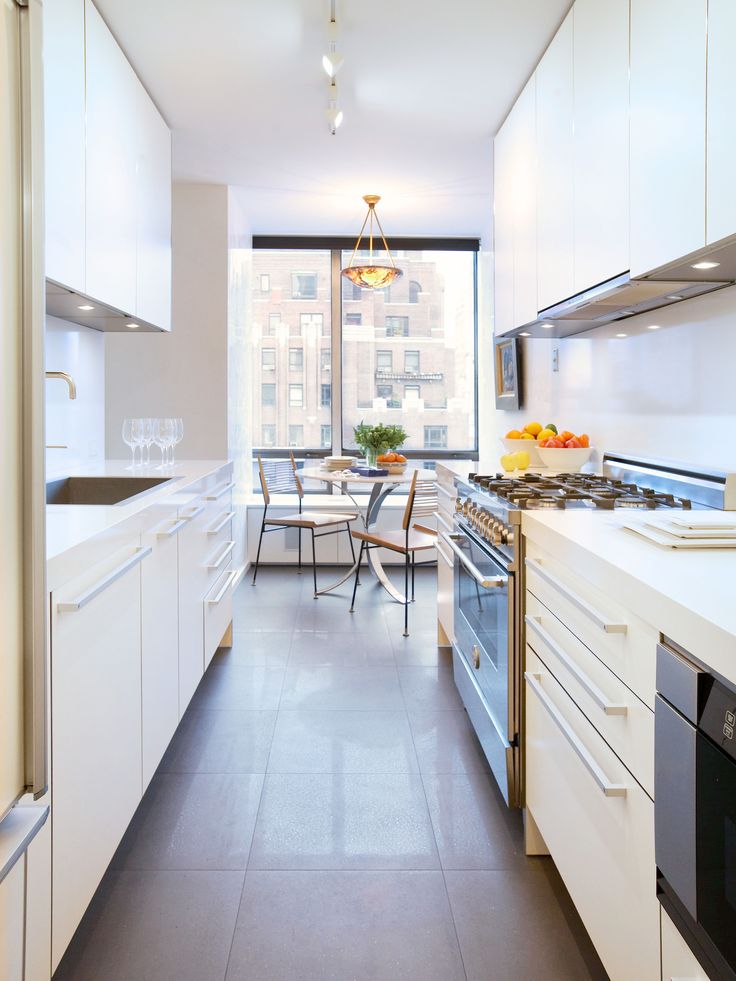 However, it is better to save the drawings for small elements - window curtains, an apron, sets of dishes, and it is advisable to leave the rest of the surfaces plain.
However, it is better to save the drawings for small elements - window curtains, an apron, sets of dishes, and it is advisable to leave the rest of the surfaces plain.
Color combinations in the interior of a narrow kitchen
The choice of colors for a narrow kitchen is one of the most crucial moments. By combining tones according to all the rules of decoration, a long room can be visually expanded, bringing its geometry closer to the desired shape. But the more modest the dimensions of the room, the more careful you should be with bright and saturated shades. So that the kitchen does not seem colorful, it is recommended to avoid contrasts, even if we are talking about a banal black and white checkerboard. Eye-catching elements should be located near narrow walls, but sometimes an emphasis in the center is necessary for zoning a space, for example, dividing it into a working and dining area.
Achromatic
Combinations of white, gray and black in an elongated kitchen always look very stylish. They can be diluted with natural wood countertops, small bright details (apron, separate cabinet doors, refrigerator), colored dishes and decor.
They can be diluted with natural wood countertops, small bright details (apron, separate cabinet doors, refrigerator), colored dishes and decor.
Cold
Quite often used in the design of narrow rooms. Pastel blotches on a matte white background are a good option for an airy Provence, country, marine, Scandinavian style. However, the base may well be colored: in a long kitchen, light gray, pale blue, olive, lavender, beige will look beautiful. All these shades are easily combined with each other, but no more than 2-3 in one room.
Warm
They are best created using wood textures and ocher, brick tones. In such a palette, the lightest shades can be represented by milky white, lemon, peach, greenish khaki, and the darkest shades can be represented by brown coffee and chocolate. Well complement the warm range of red, yellow, green, from metals - gold and bronze.
Finish
In addition to the standard requirements for quality, safety and durability, the materials used to finish a narrow kitchen must meet certain aesthetic requirements. In such rooms, colorful drawings, large decor and rich contrasts are completely undesirable. It is better to leave all this for overly spacious rooms, and decorate a small cooking area elegantly and discreetly.
In such rooms, colorful drawings, large decor and rich contrasts are completely undesirable. It is better to leave all this for overly spacious rooms, and decorate a small cooking area elegantly and discreetly.
Ceiling
The optimal solution for finishing the ceiling area in a narrow space is a smooth, light surface. Depending on the chosen style, you can stop at a matte, satin or mirror texture. Volumetric plasterboard structures, as well as two-tiered perimeter frames, are usually not suitable for such cases. The only exception is a large narrow kitchen with a high ceiling, which can be visually zoned with a square shape and floating lighting.
Walls
When it comes to a small space, the walls in it should be as simple as possible. Light monochromatic painting or the same wallpaper is an excellent basic option. To avoid the "train" effect, it is not recommended to use horizontal patterns on long walls, including stripes. At the same time, a pronounced vertical, whether it is an insert of a rich shade, some large image, or, for example, a red refrigerator against a white headset, will help balance the geometry of the kitchen.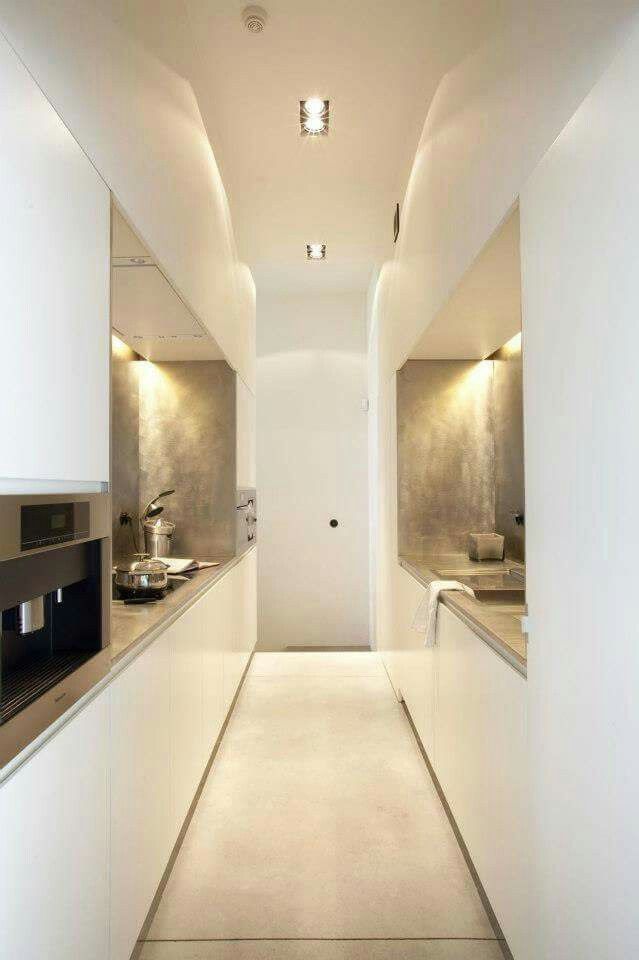 A free wall can be visually moved away if you stick photo wallpapers on it with a realistic perspective directed inward.
A free wall can be visually moved away if you stick photo wallpapers on it with a realistic perspective directed inward.
Apron
In addition to its direct purpose - to protect the wall near the stove, sink and worktop from splashes - this element is one of the most significant decorations of the kitchen. There are no special rules for its design in narrow rooms - it all depends on the preferences of the owners and the style as a whole. However, it is advisable to avoid placing horizontal borders and catchy drawings on the apron. Medium-sized brick or stone masonry, tiles of related shades, square mosaic, fashionable patchwork, glass with mirror illumination will look much better.
Floor
When finishing the floor in a narrow room, preference should be given to non-contrasting small and medium-sized textures. They should be in harmony with the rest of the design, be comfortable to use and not attract much attention.
Parquet boards and rectangular tiles should be laid parallel to narrow walls - this way the room will appear more spacious.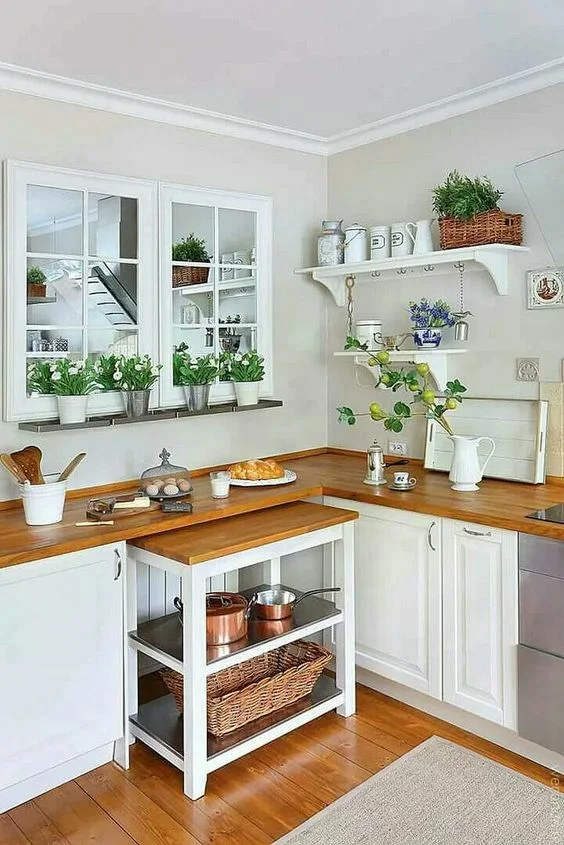 Square elements are best placed diagonally, in the form of diamonds, but they should be close in color, and not resemble a chessboard. Quite interestingly, a stylized “path” made of tiles, laminate or linoleum can look quite interesting on the floor of a narrow kitchen, but, again, colorful contrasts should be avoided.
Square elements are best placed diagonally, in the form of diamonds, but they should be close in color, and not resemble a chessboard. Quite interestingly, a stylized “path” made of tiles, laminate or linoleum can look quite interesting on the floor of a narrow kitchen, but, again, colorful contrasts should be avoided.
Kitchen furniture
There are few options for arranging furniture in a compressed space. One way or another, the headset is installed along one or both long walls. In very rare cases, if the footage allows, there is an island layout. However, the place near the window deserves special attention - it is too often ignored, and in terms of design this is one of the most interesting segments of the narrow kitchen.
So, the first thing to consider is the possibility of arranging at least a minimal dining area next to the window. A transforming window sill may well act as a table. If desired, it can be easily turned into a comfortable sofa, and for serving dishes, use the protruding tabletop of the L-shaped set.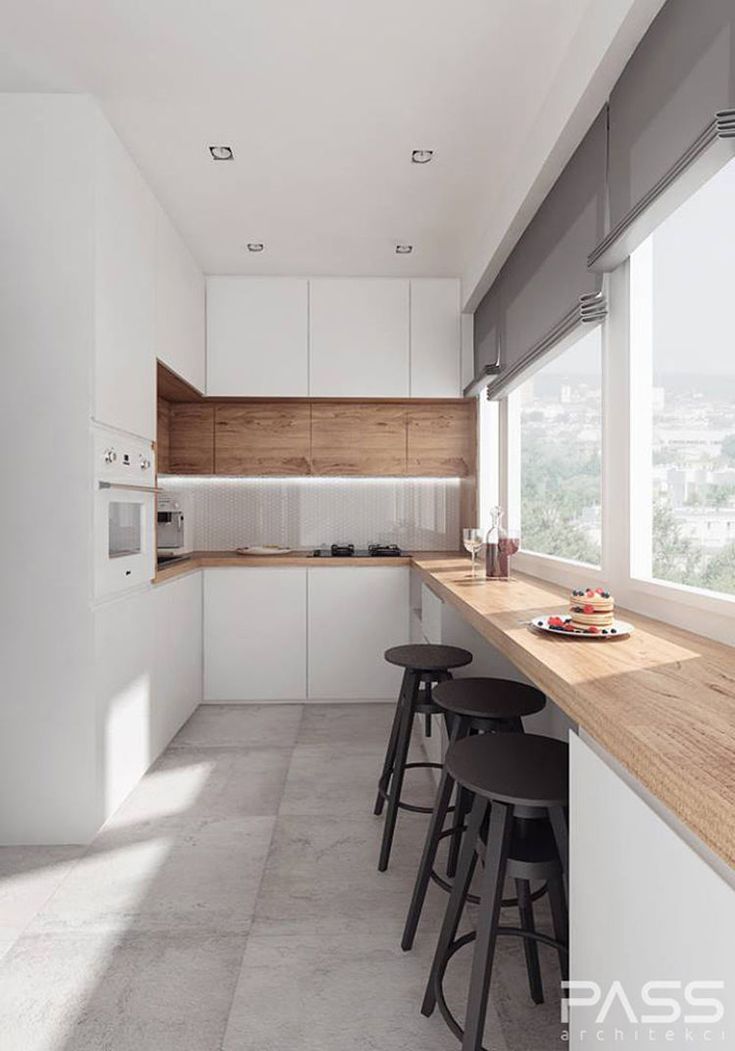 A rather interesting option for using a place near the window is a dining area, reminiscent of a side reserved seat on a train.
A rather interesting option for using a place near the window is a dining area, reminiscent of a side reserved seat on a train.
In case of a lack of free space in the kitchen, folding, retractable, mobile pieces of furniture will be a real salvation. Instead of bulky stools, you can purchase compact bar stools, bulky cabinets-tabletops can be replaced with lightweight structures with wall mounts.
The ideal set for a long cramped kitchen should be with smooth facades, without pretentious decor and sharp contrasts. Options without handles, with magnetic fasteners will look very modern. The height up to the ceiling will help to compensate for the narrowed format of the cabinets. A built-in storage system with a mezzanine can also be equipped around the window opening - this way the space will be used even more efficiently.
Design of a narrow kitchen - photo
The design of a narrow kitchen is a real challenge for designers, craftsmen and just owners of this type of premises.